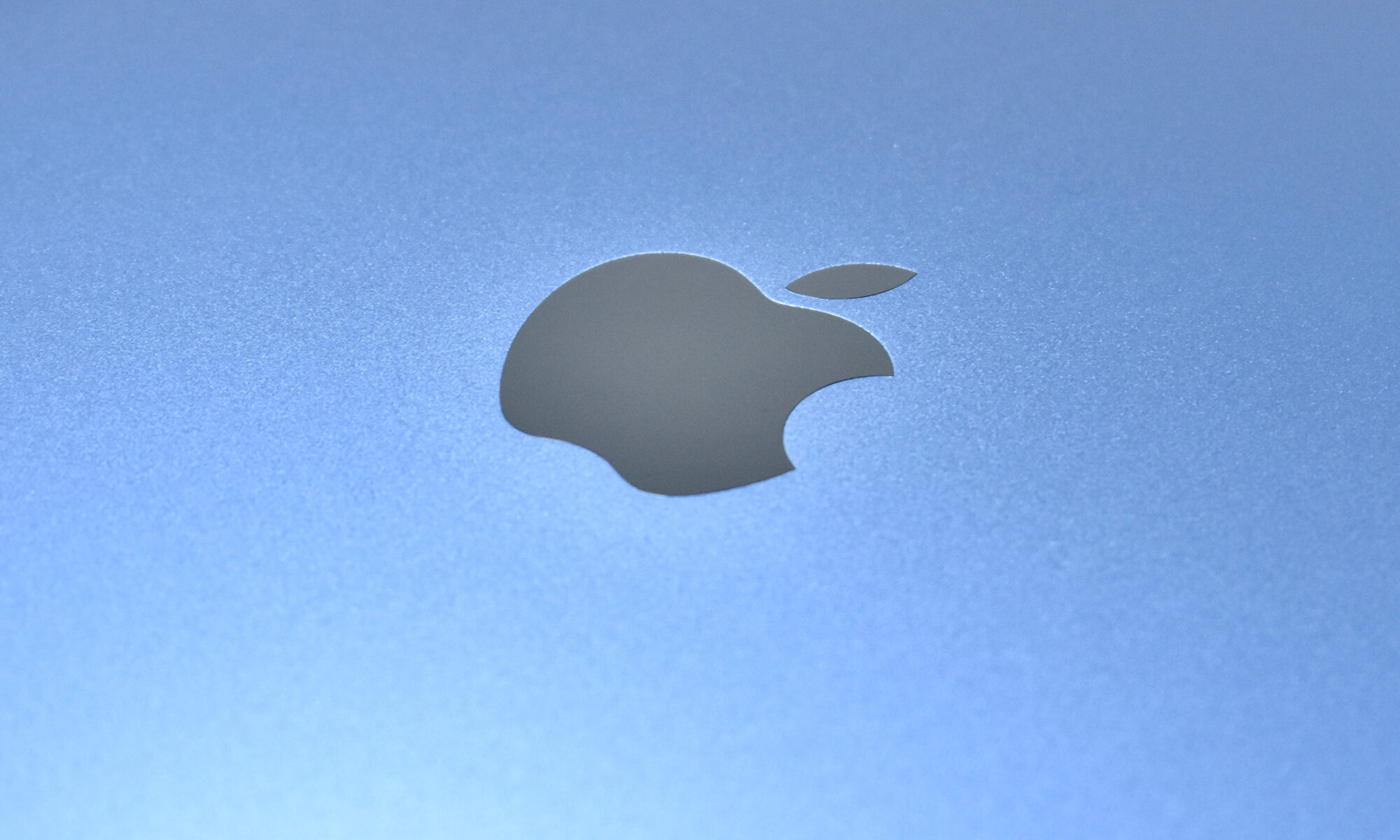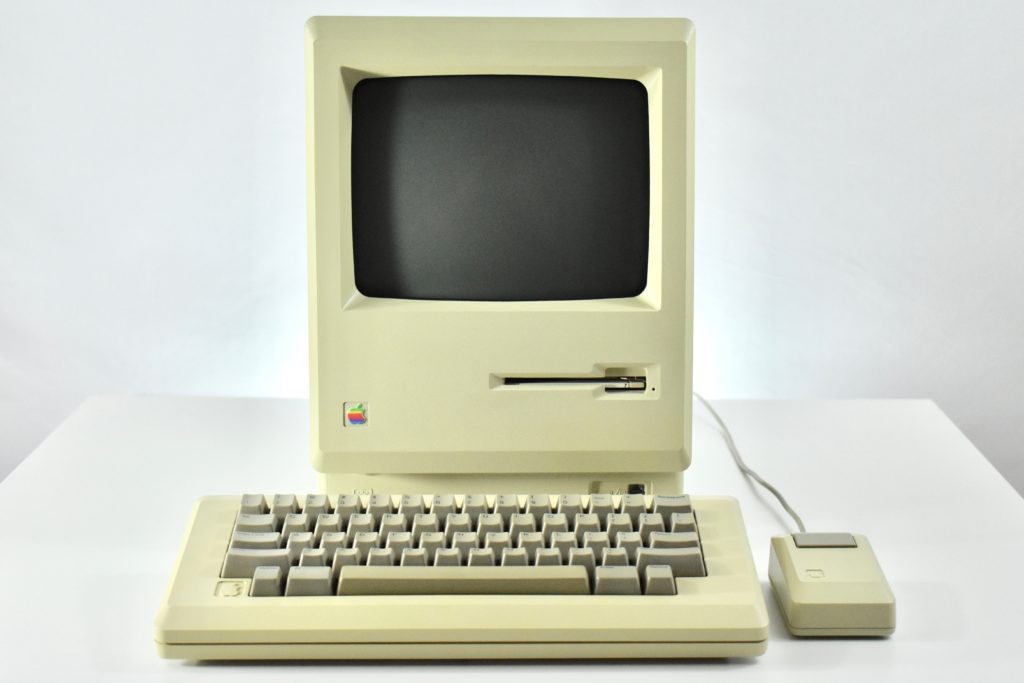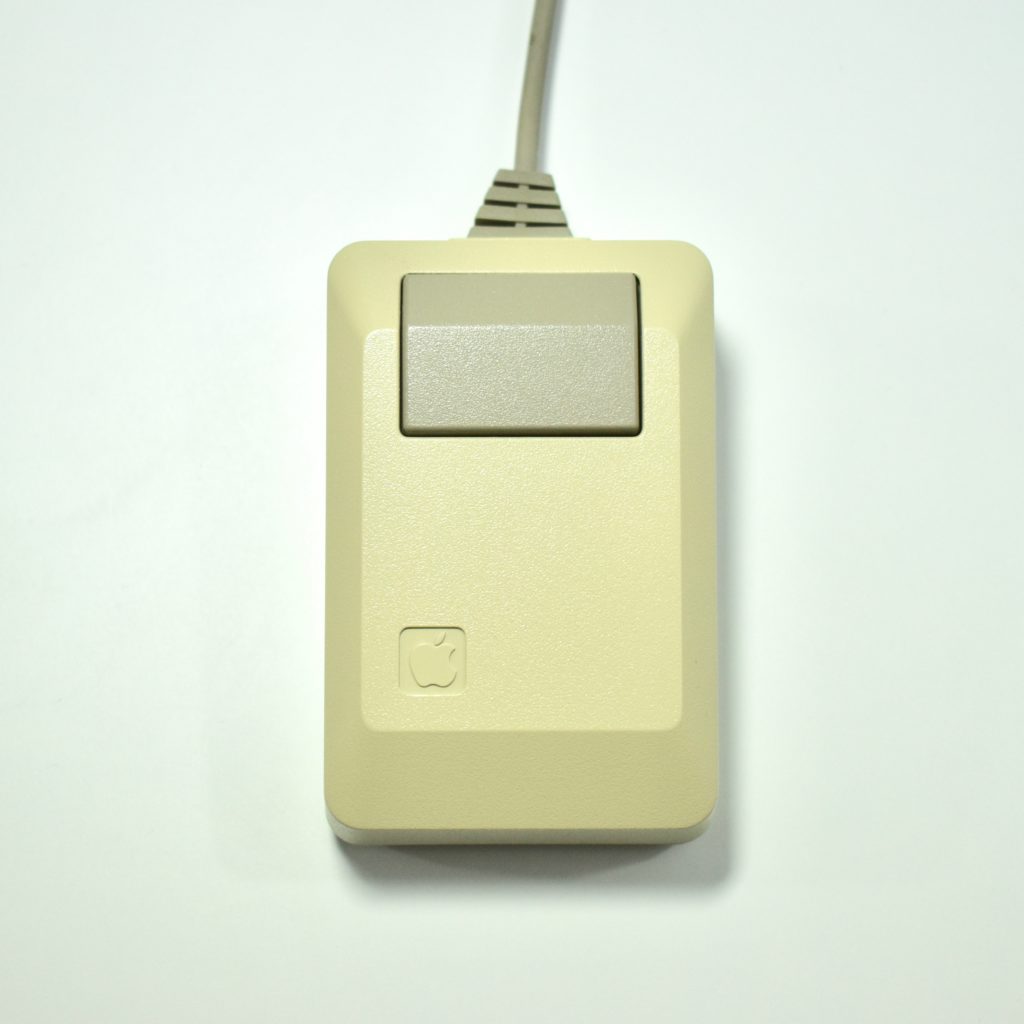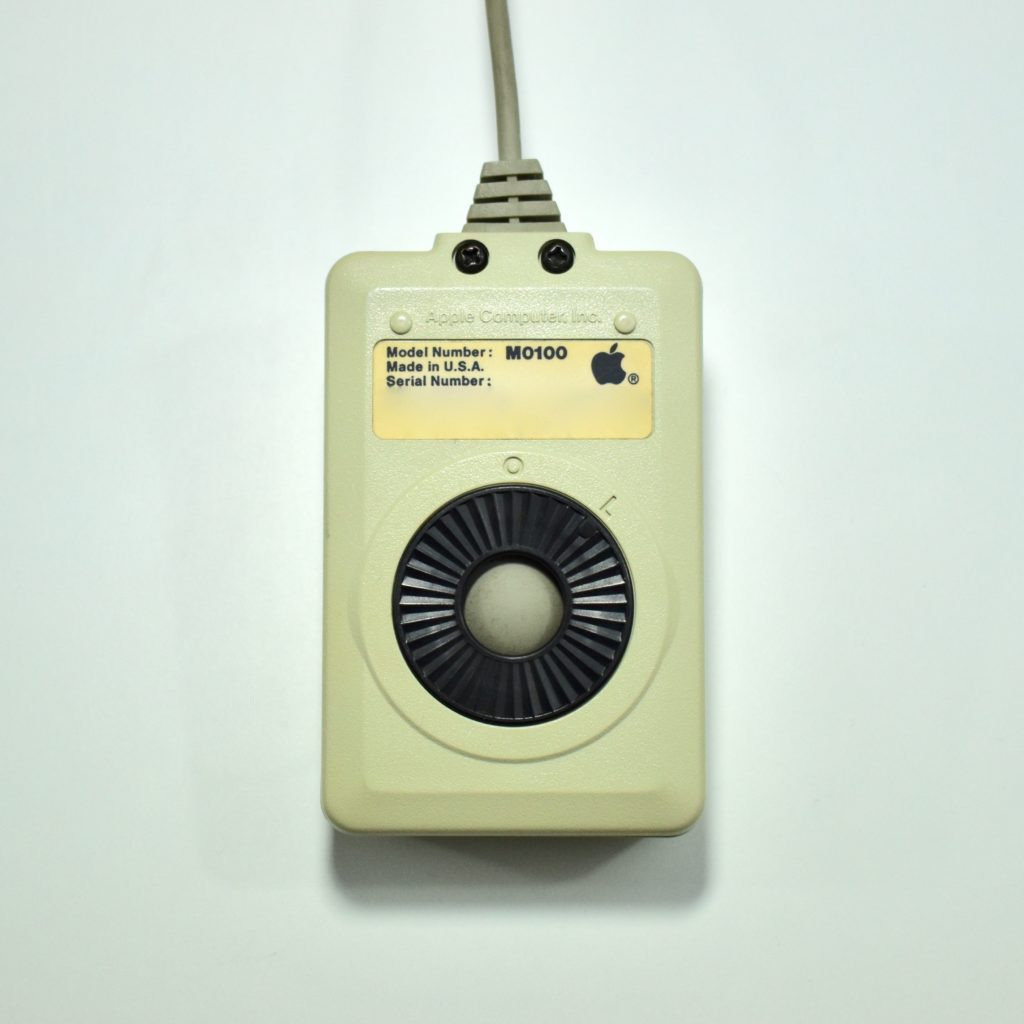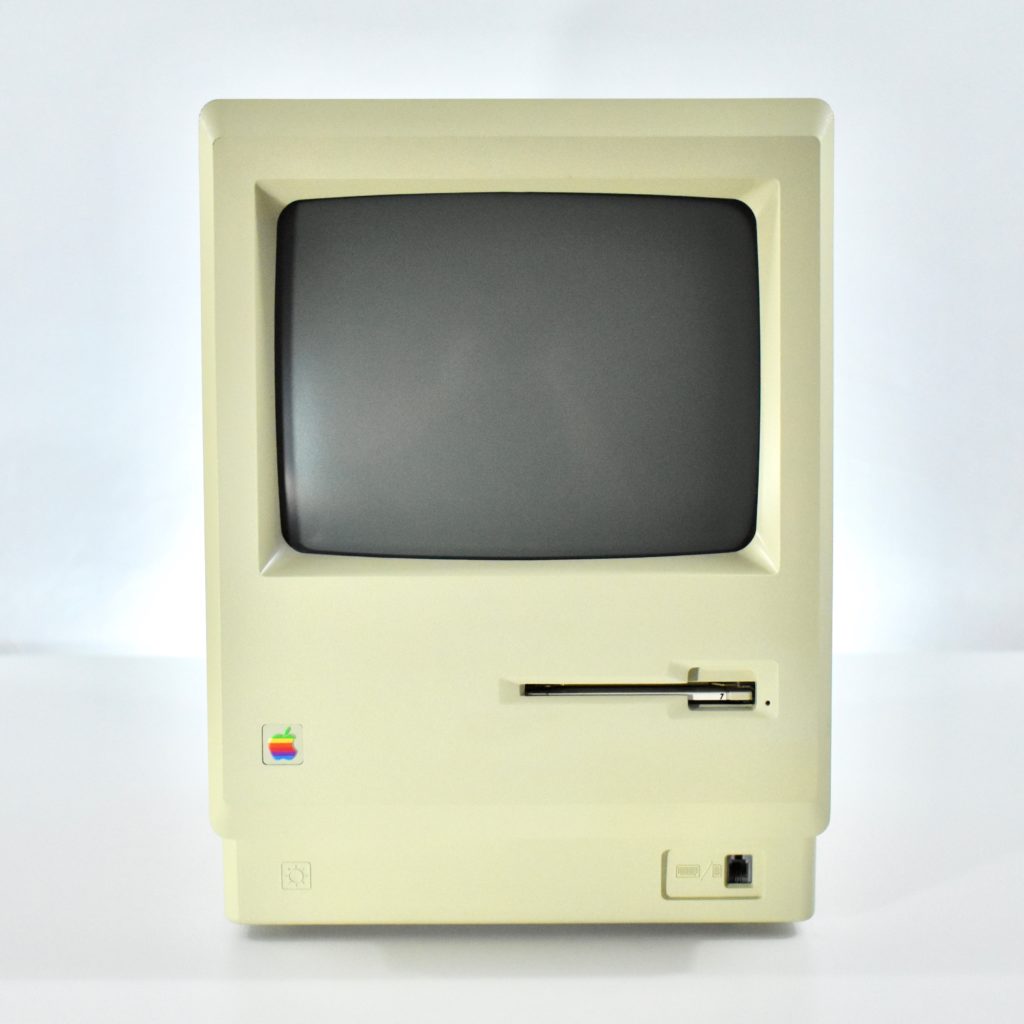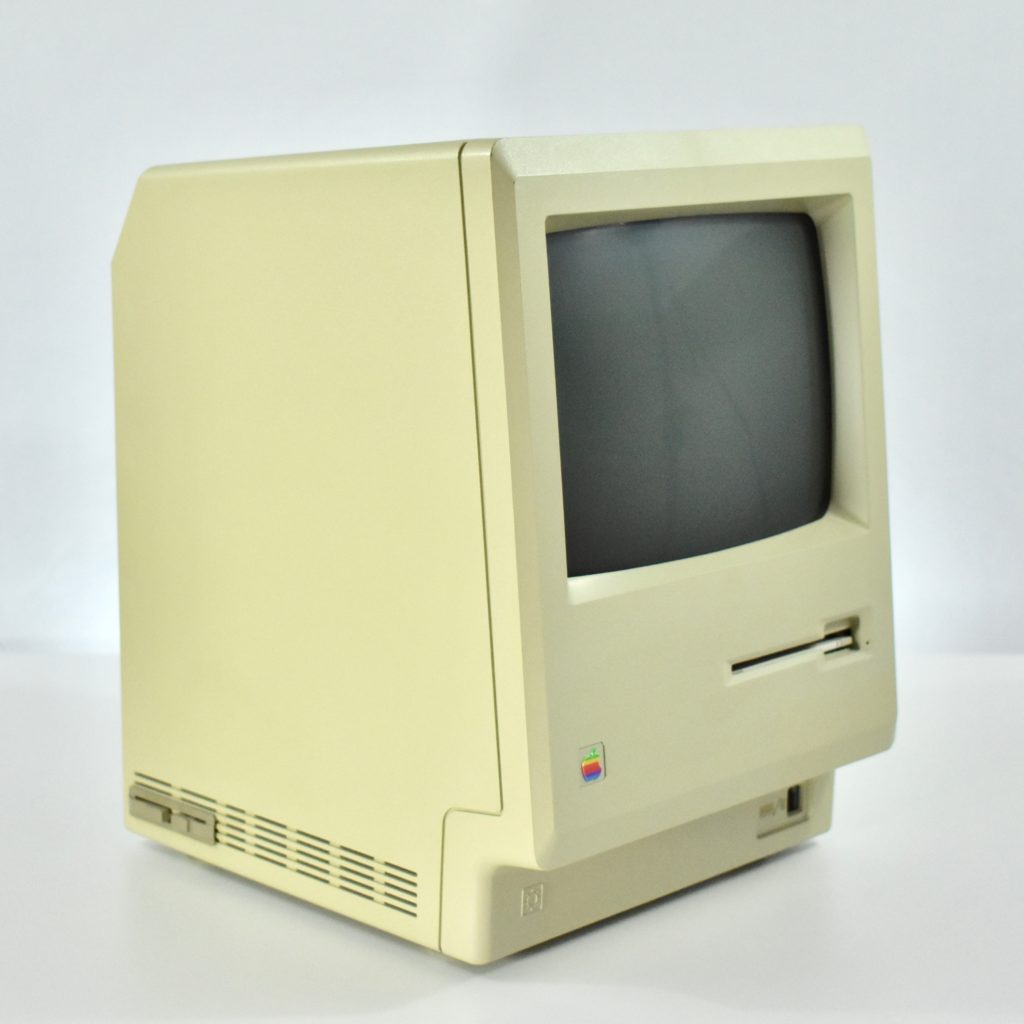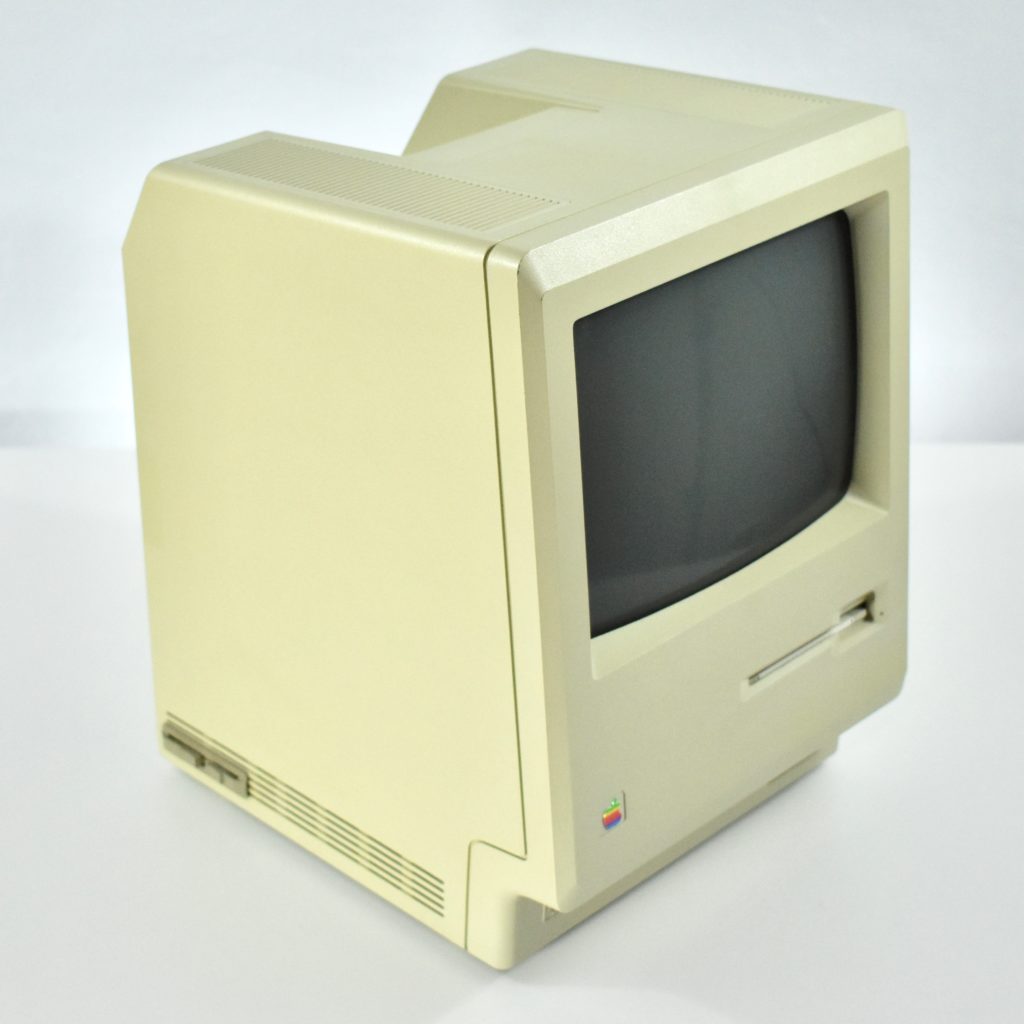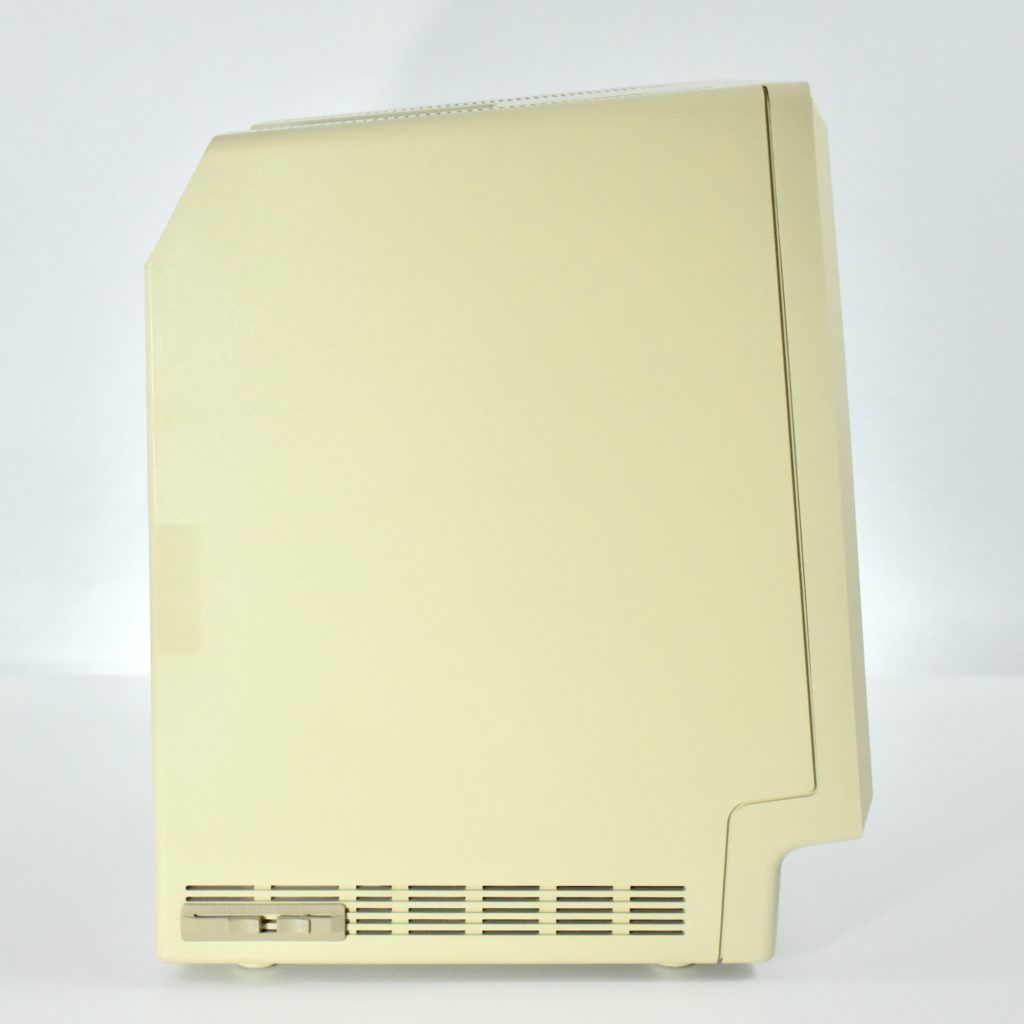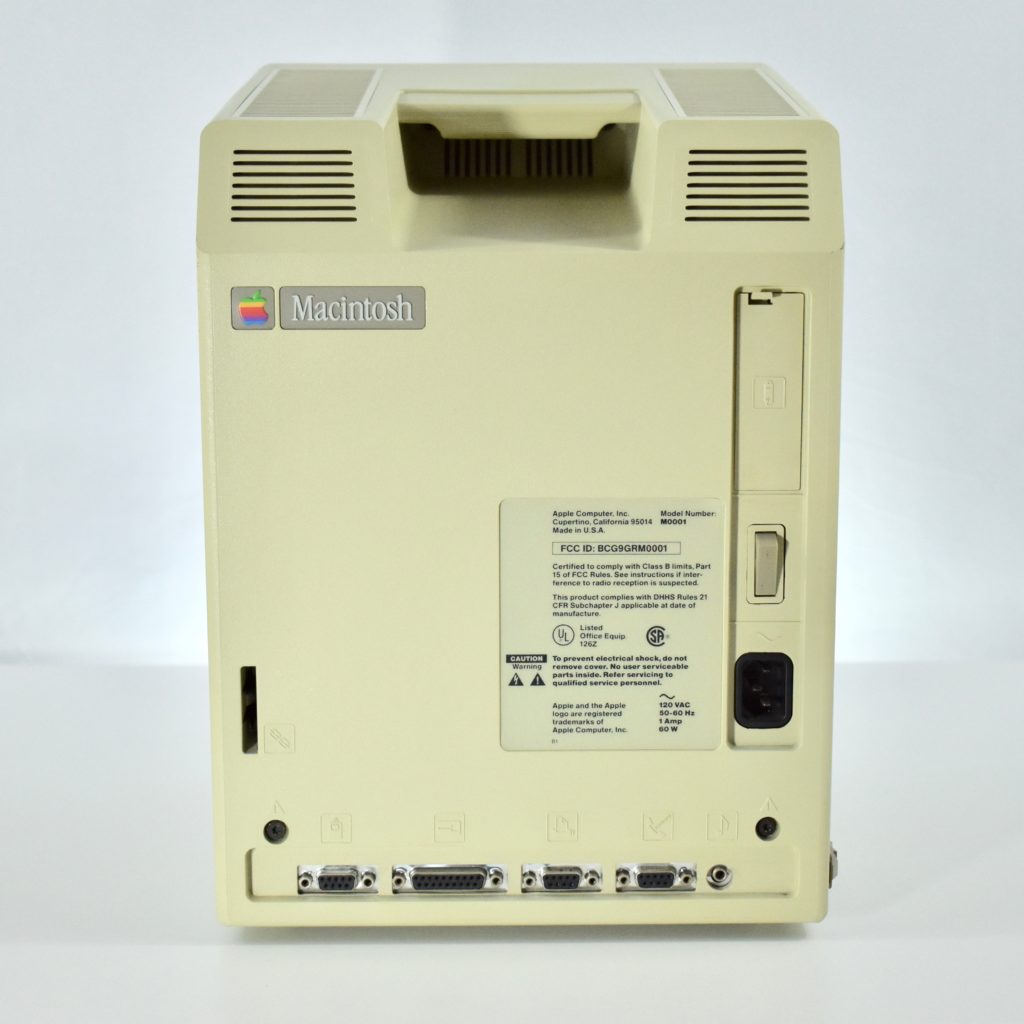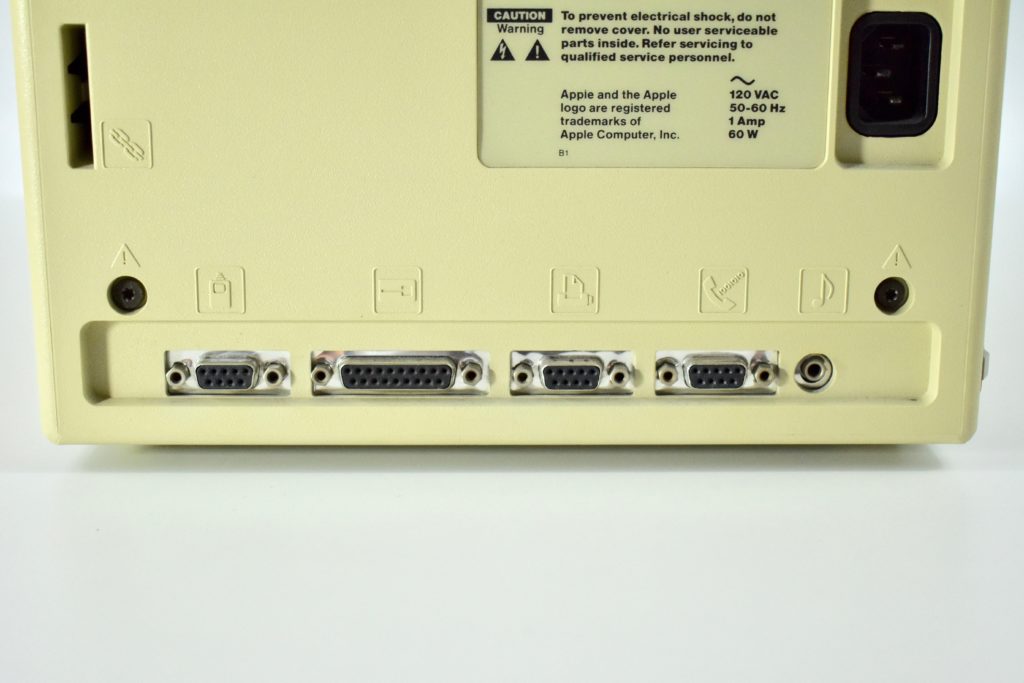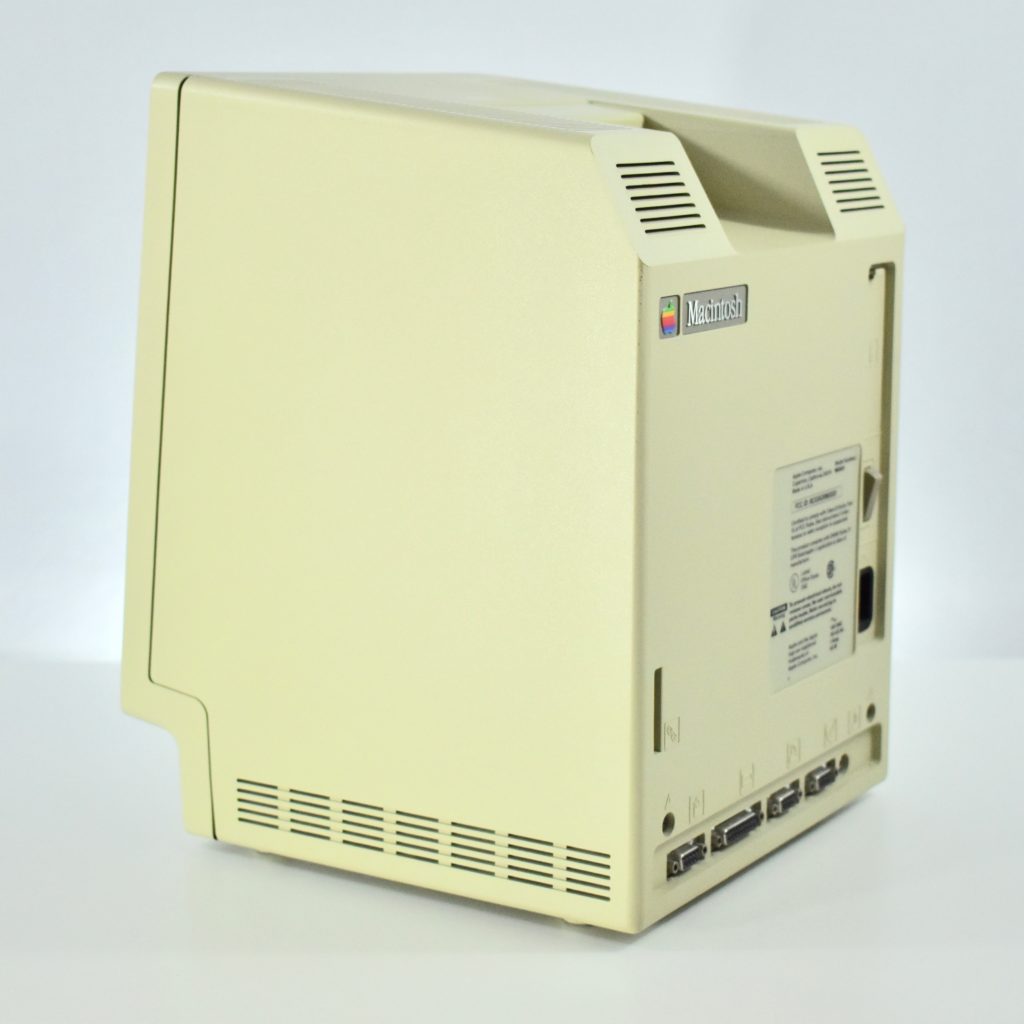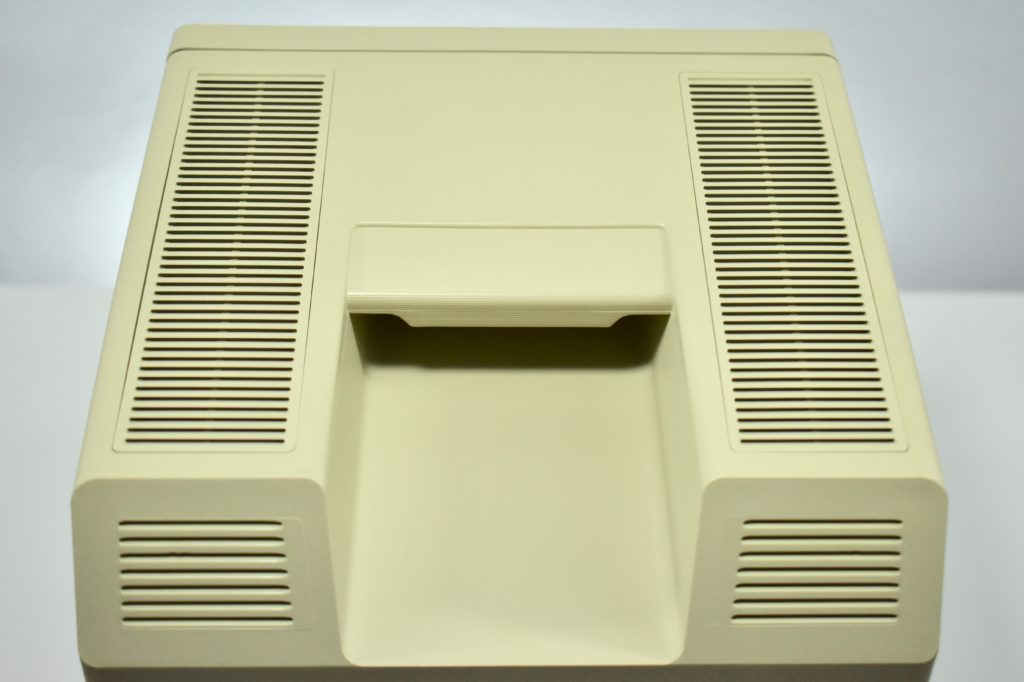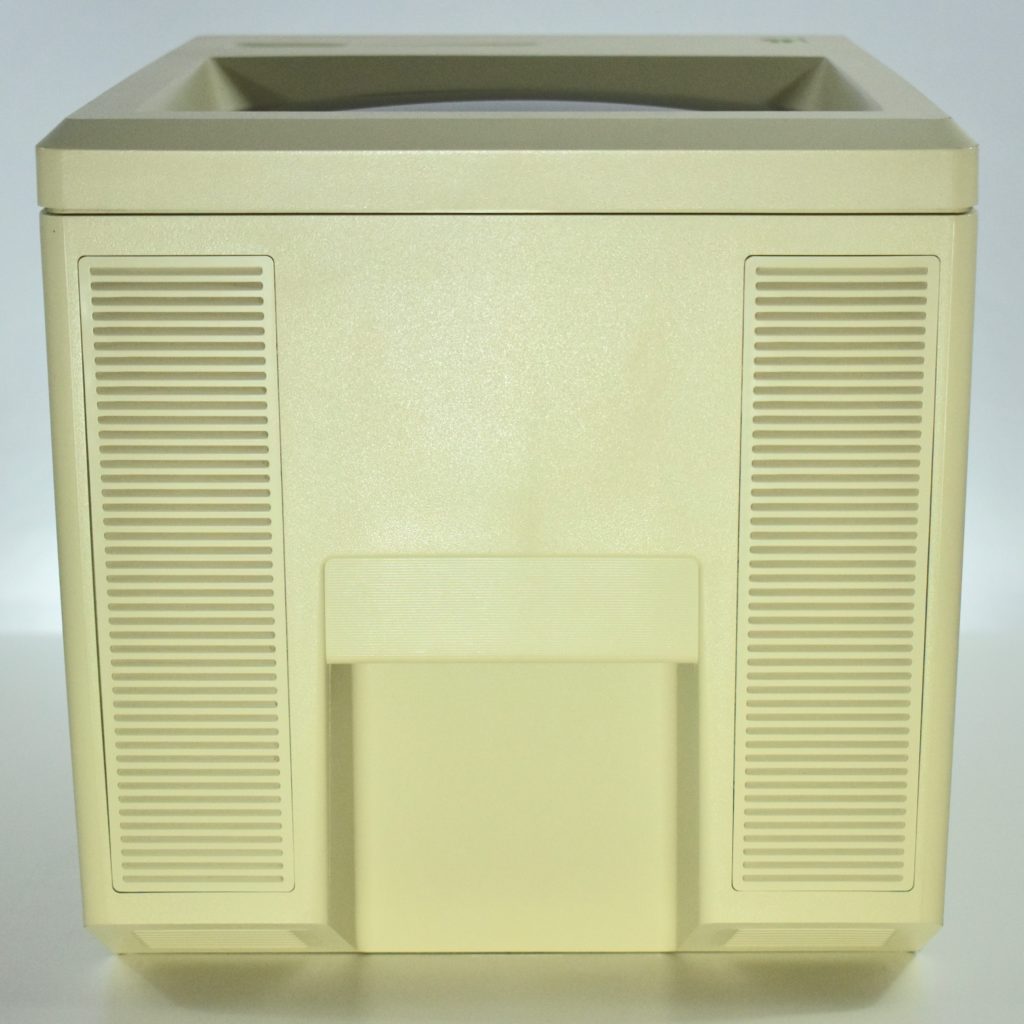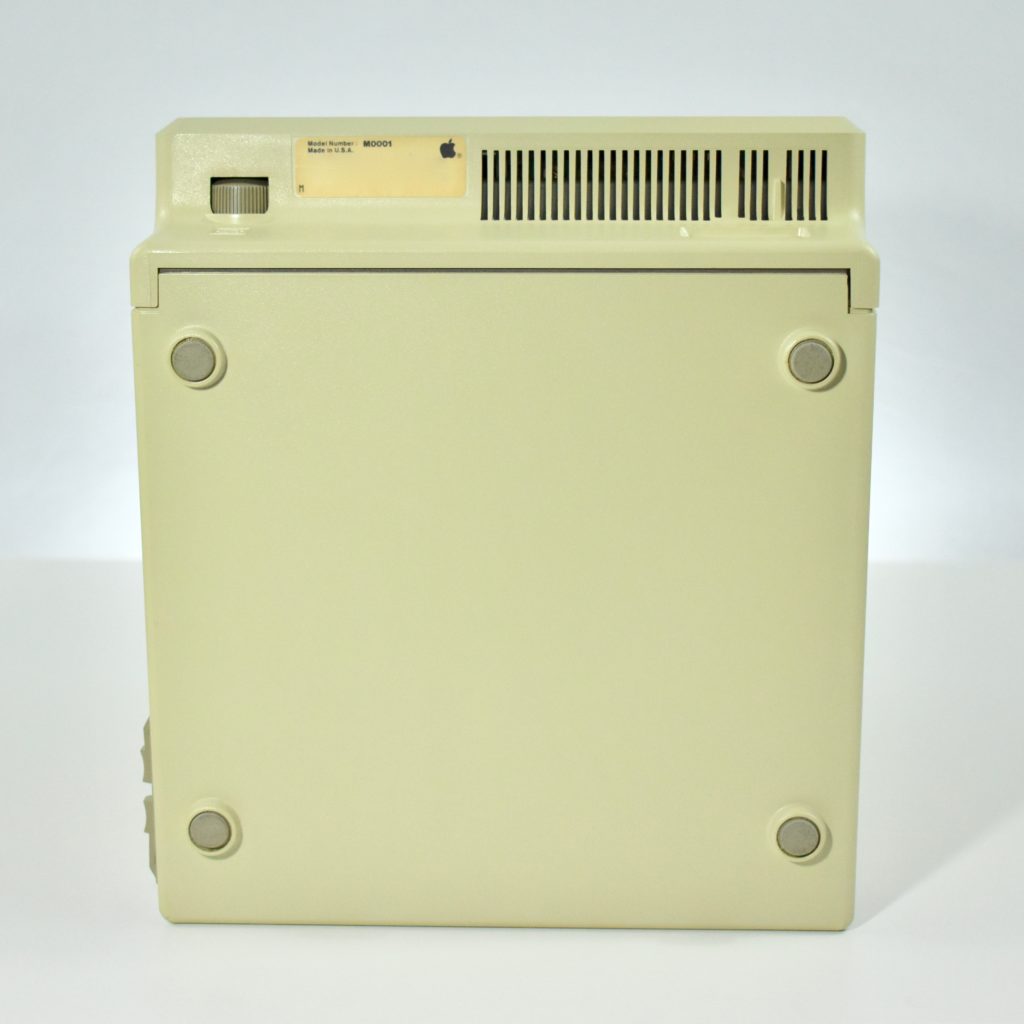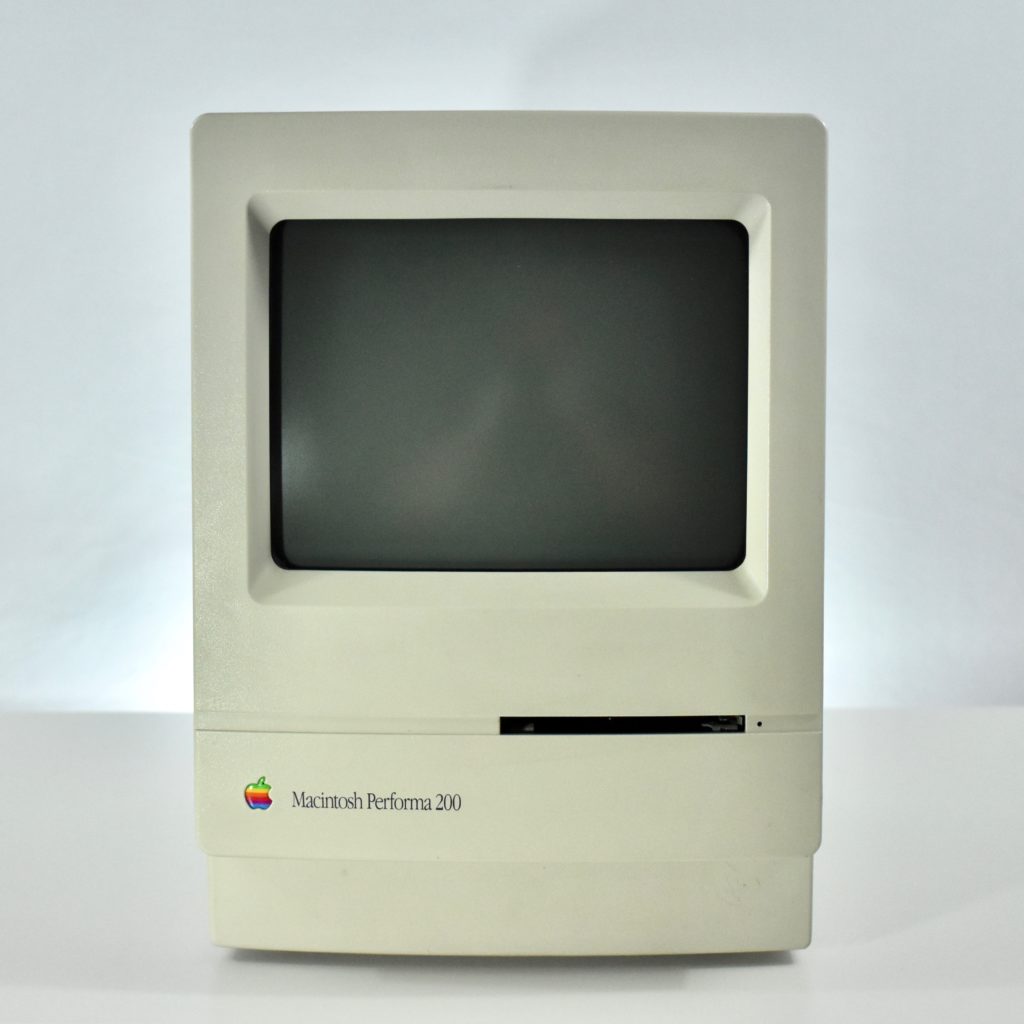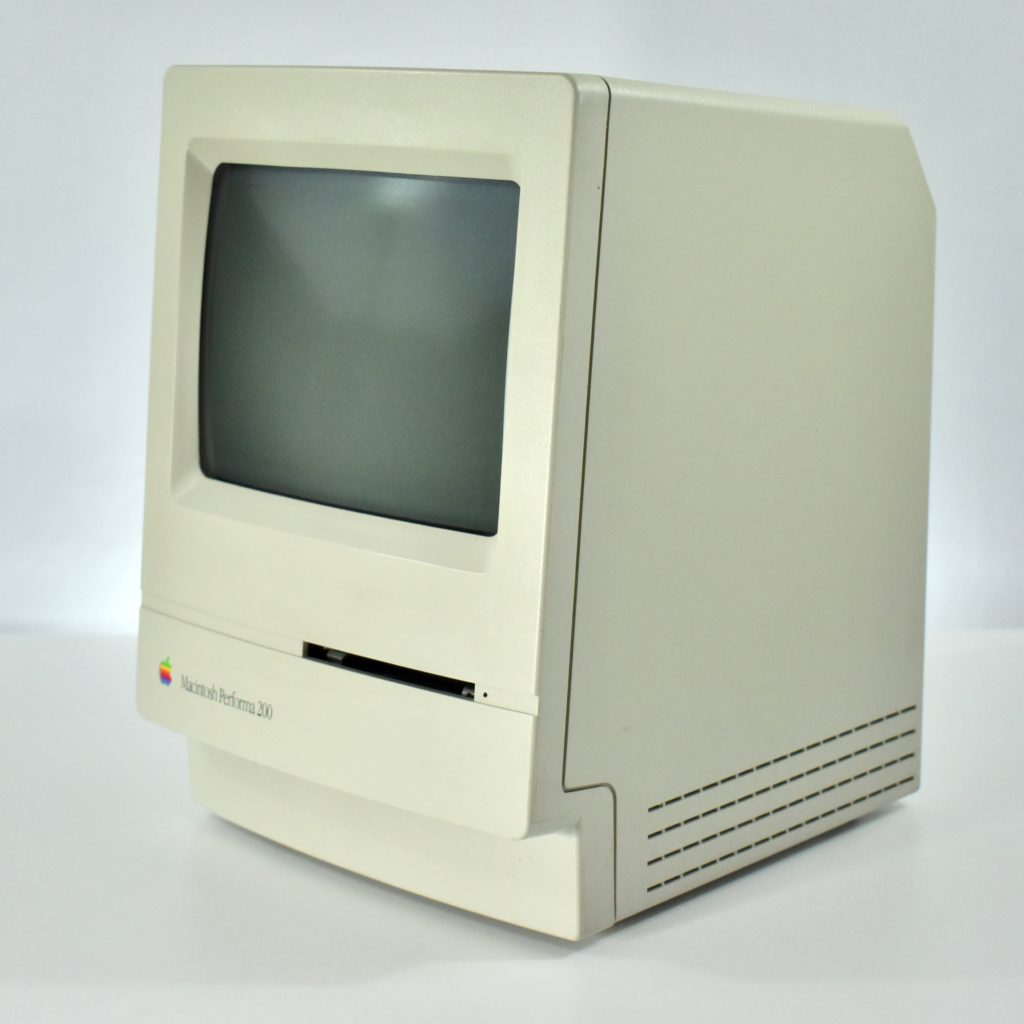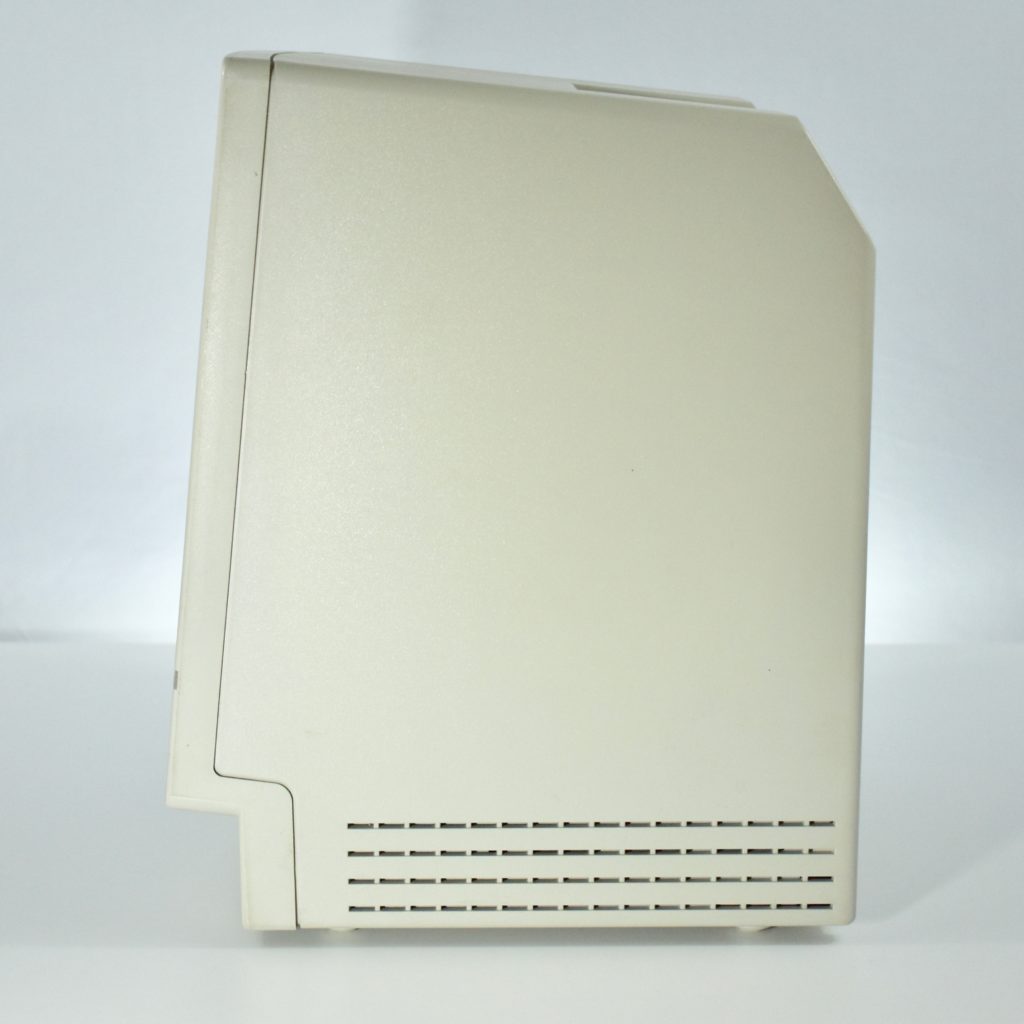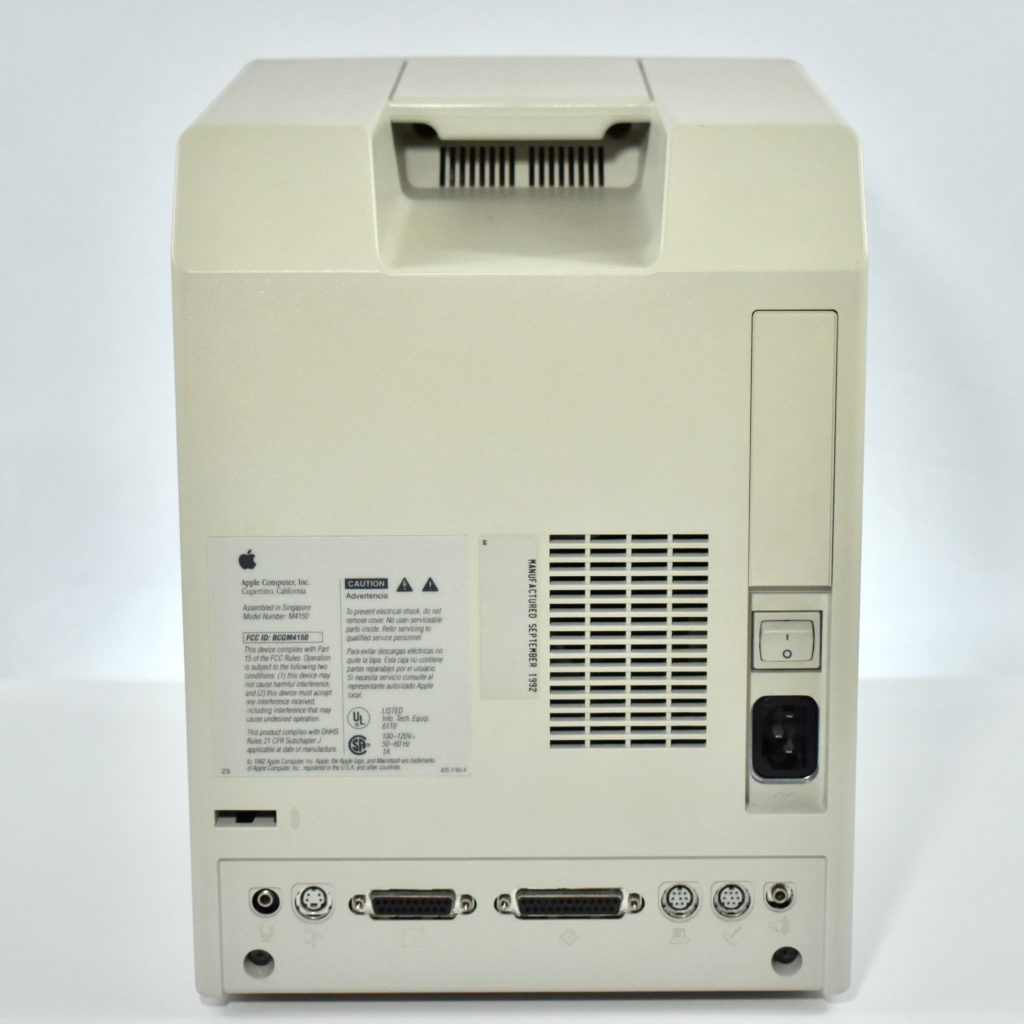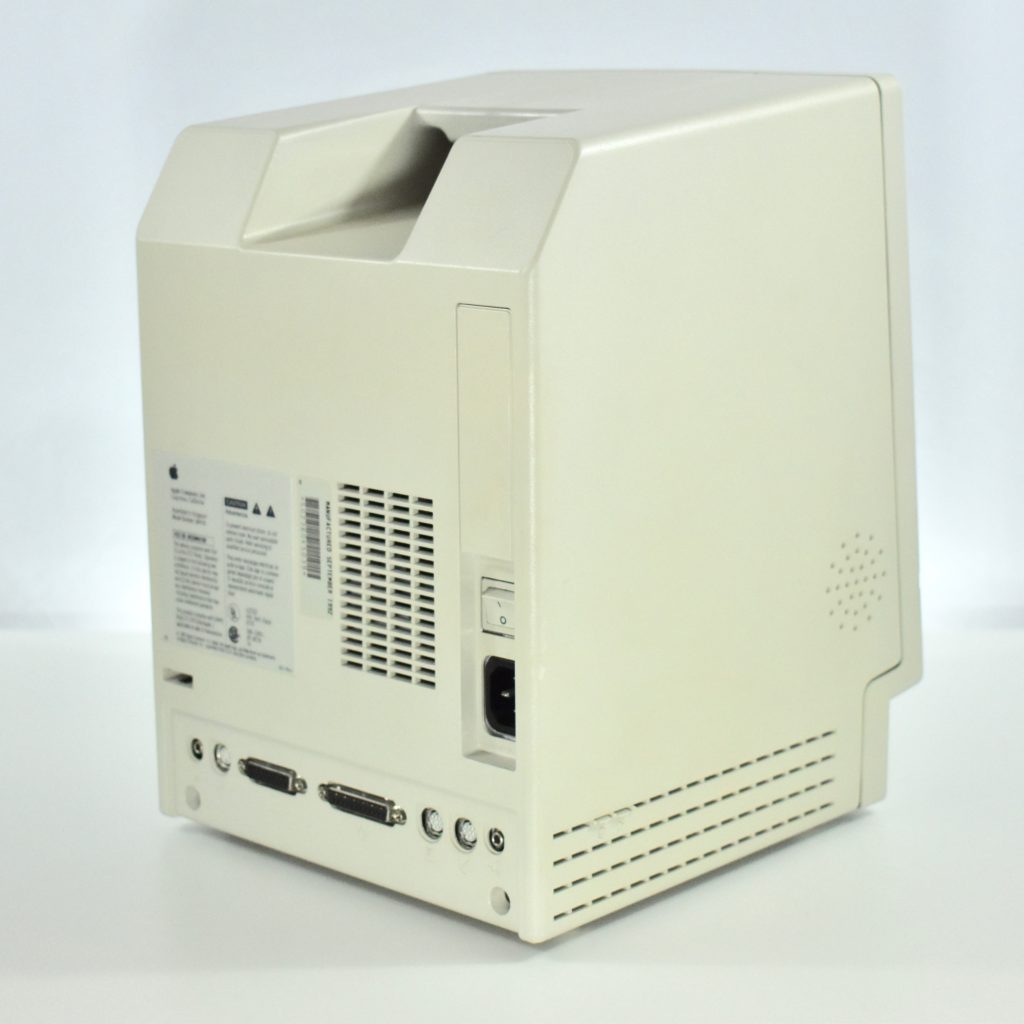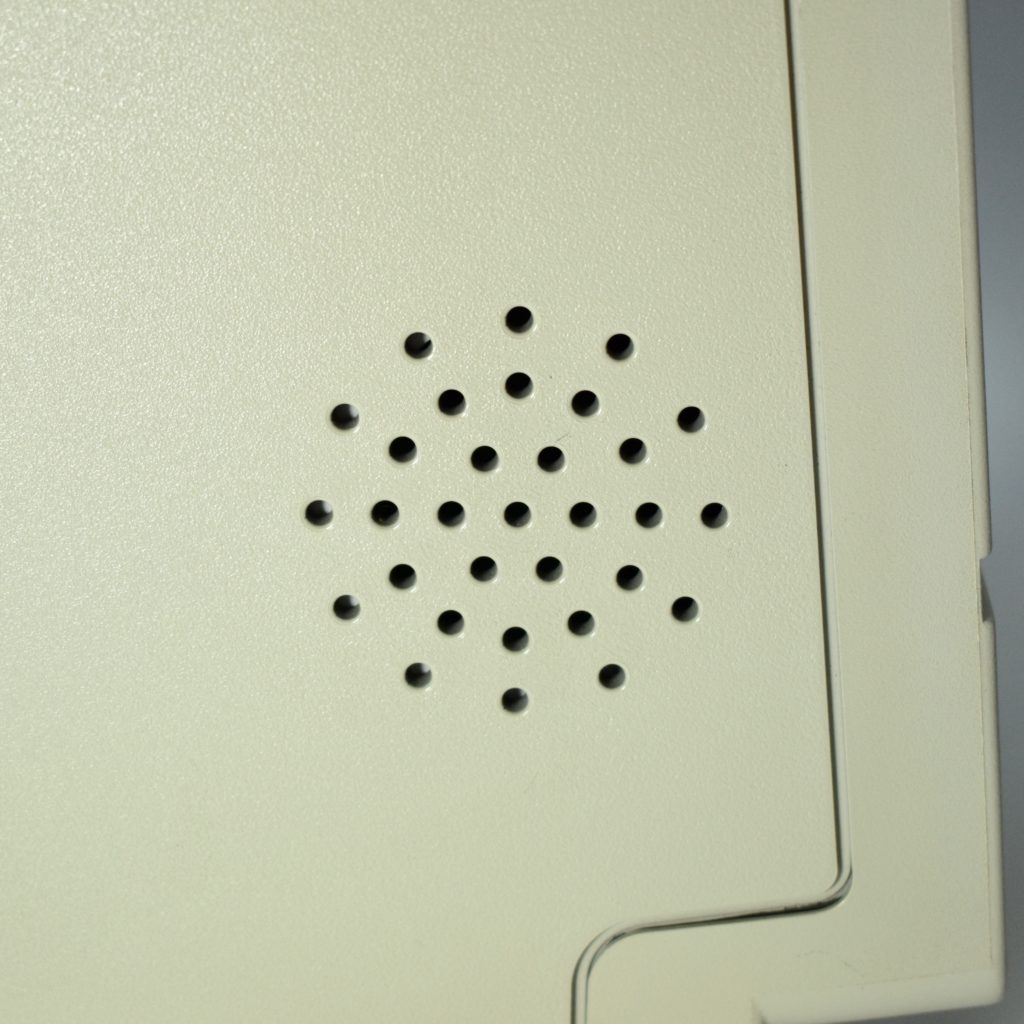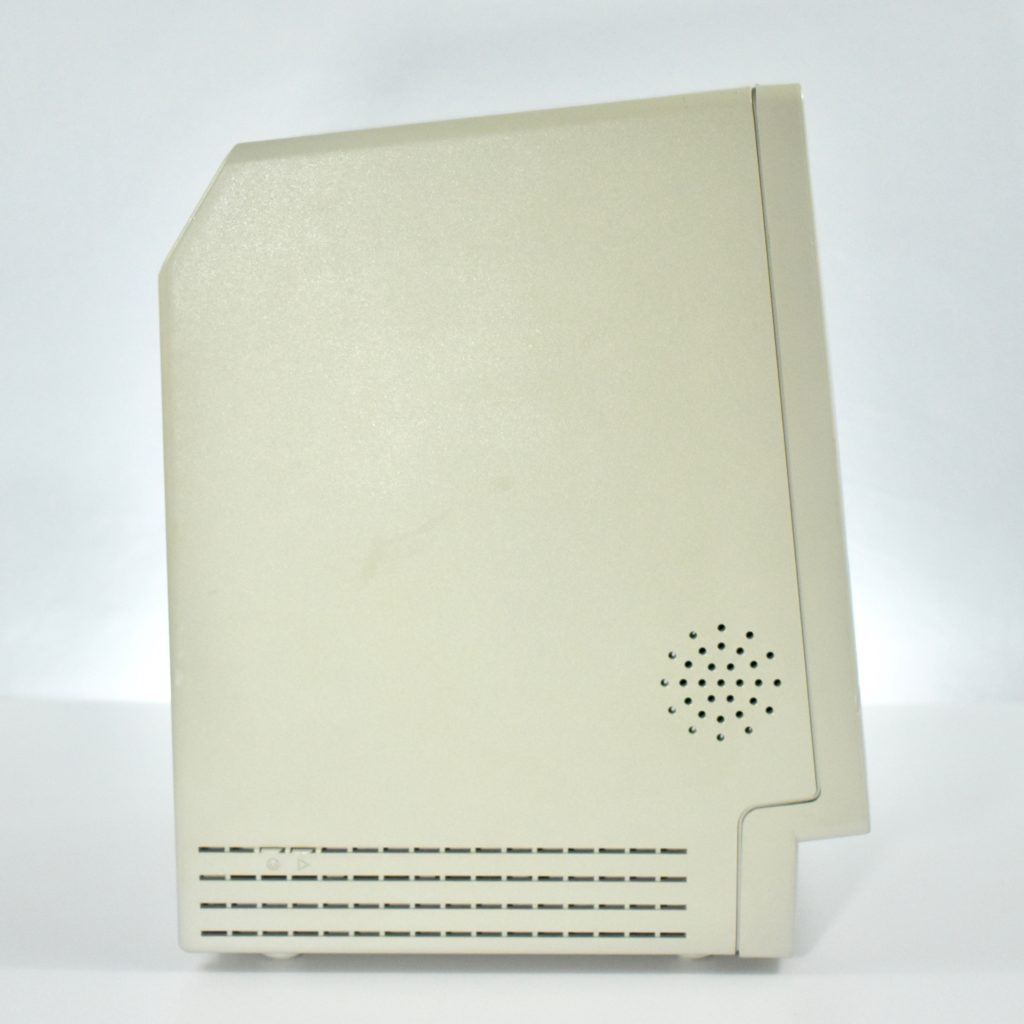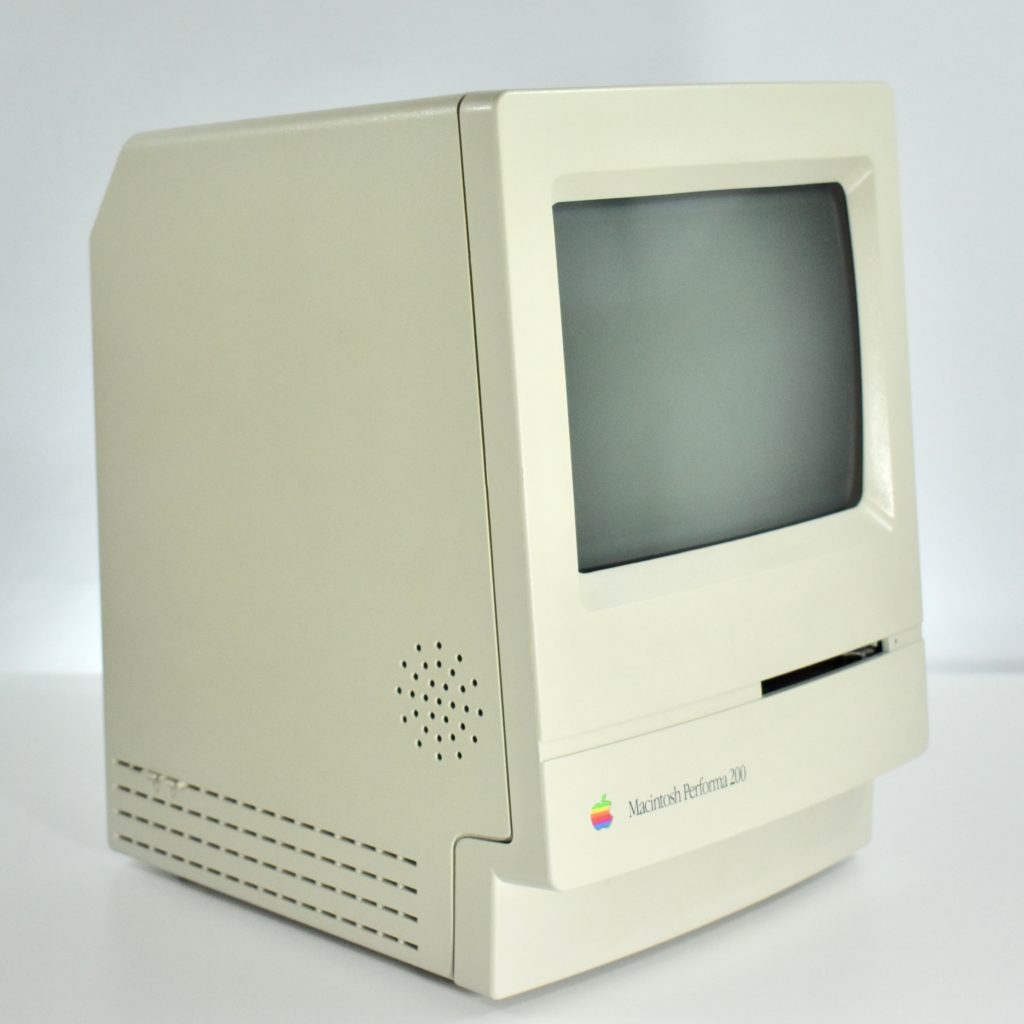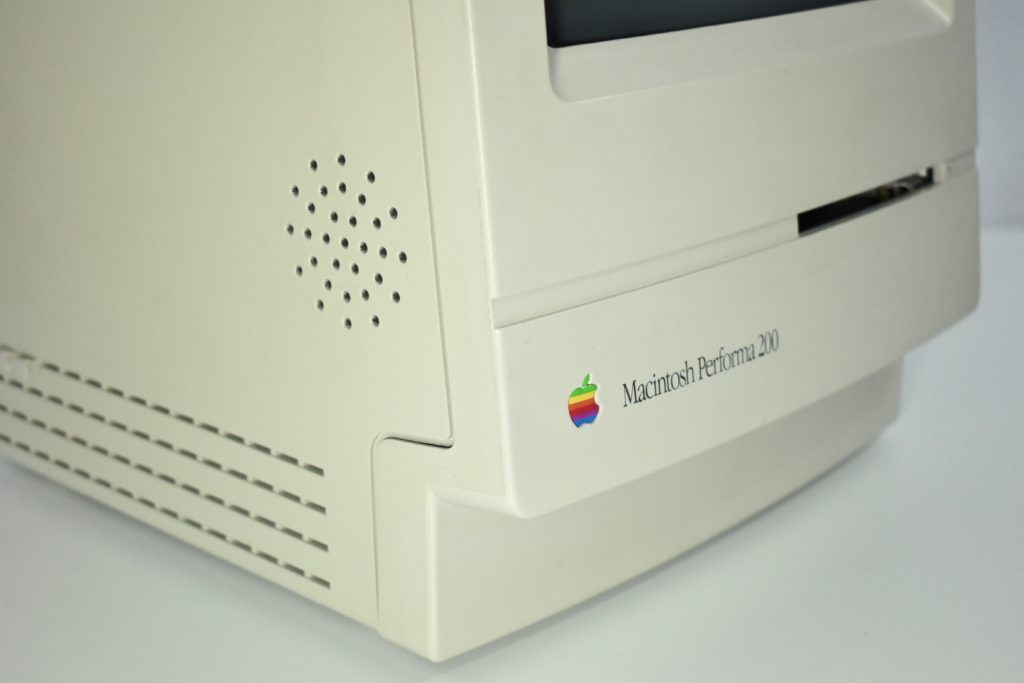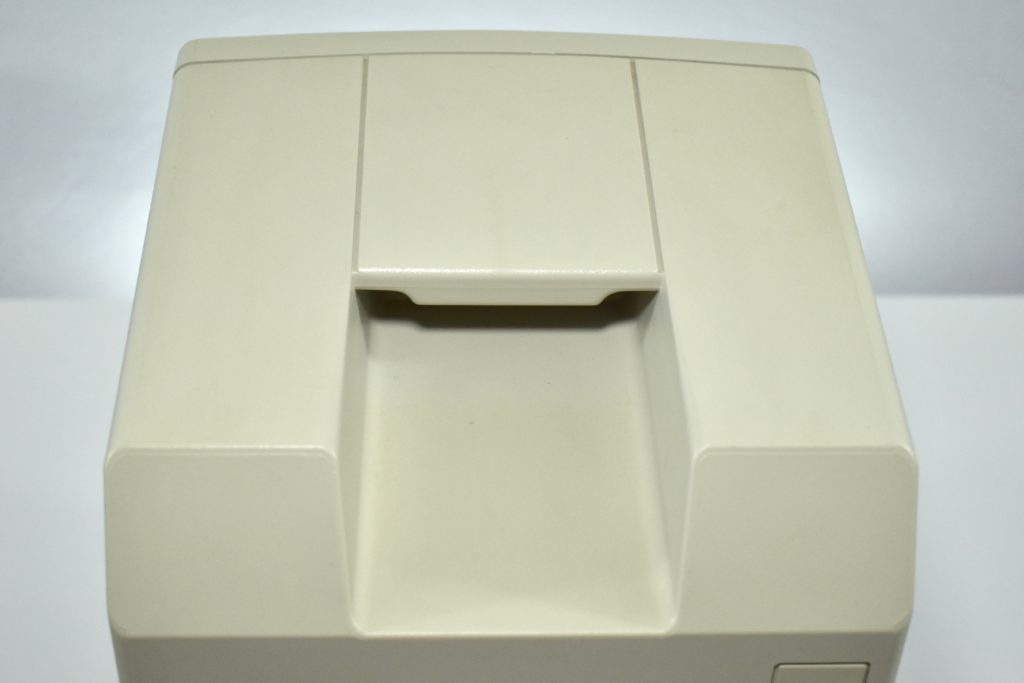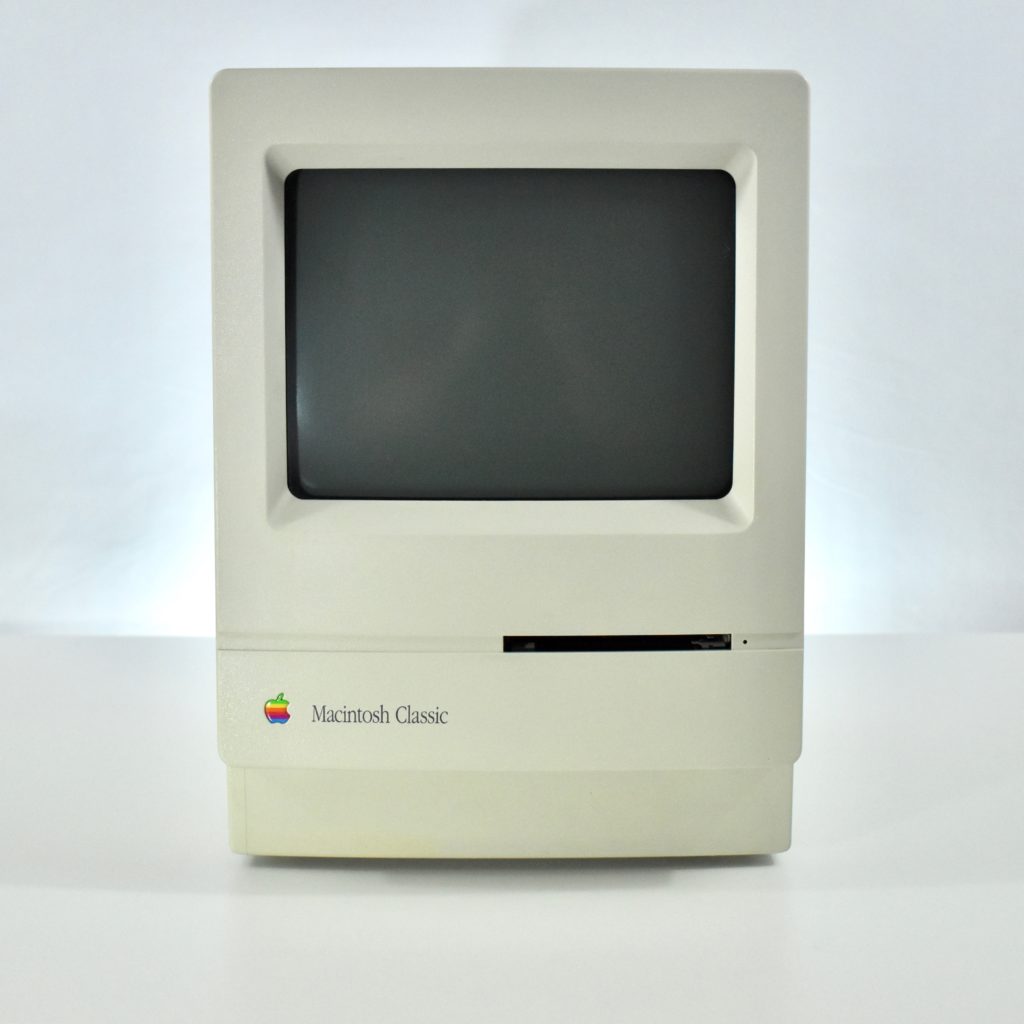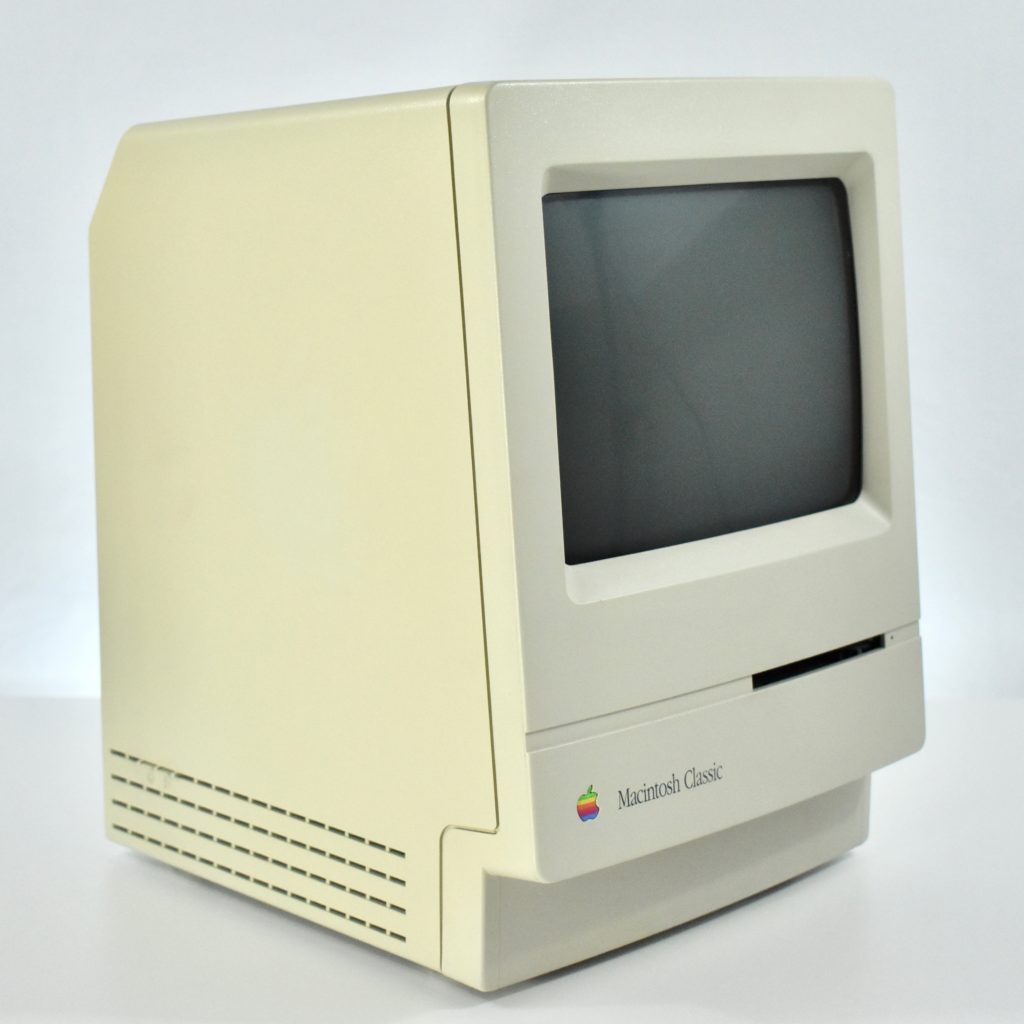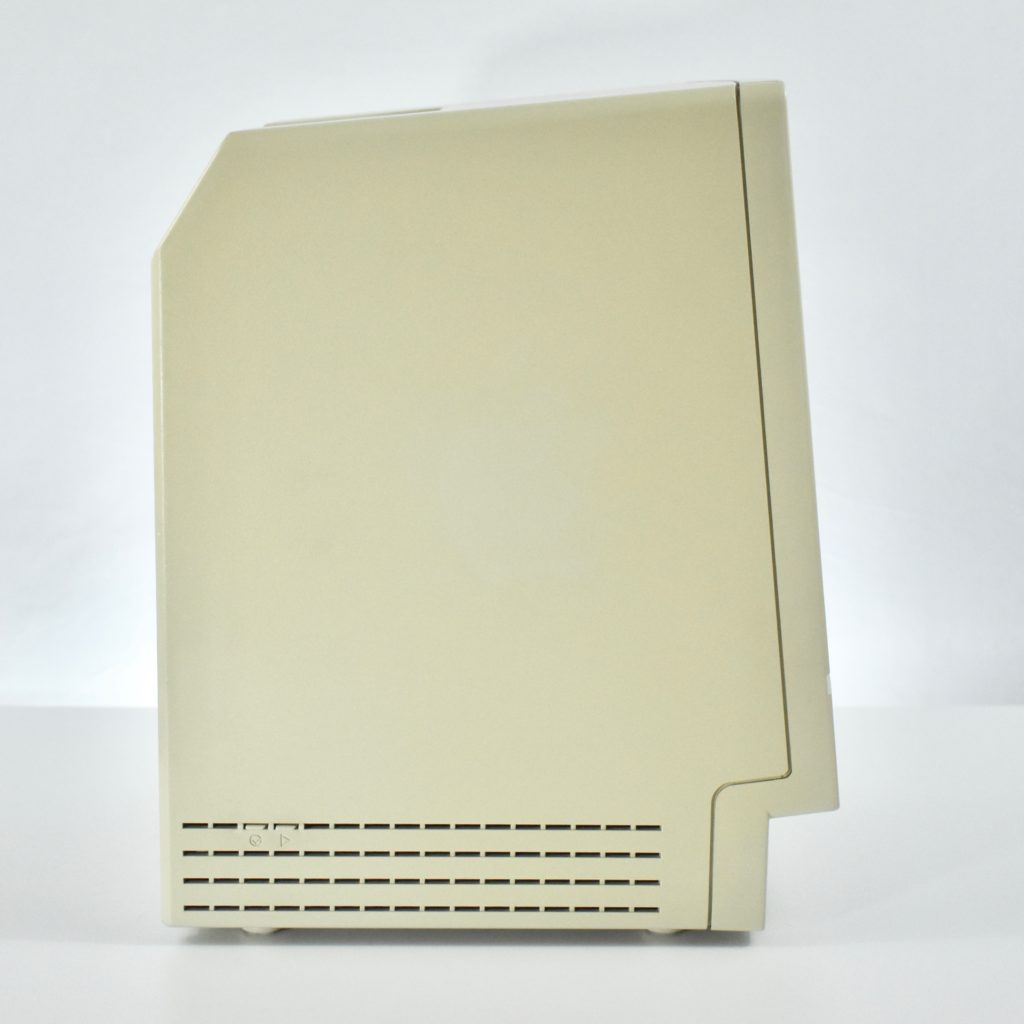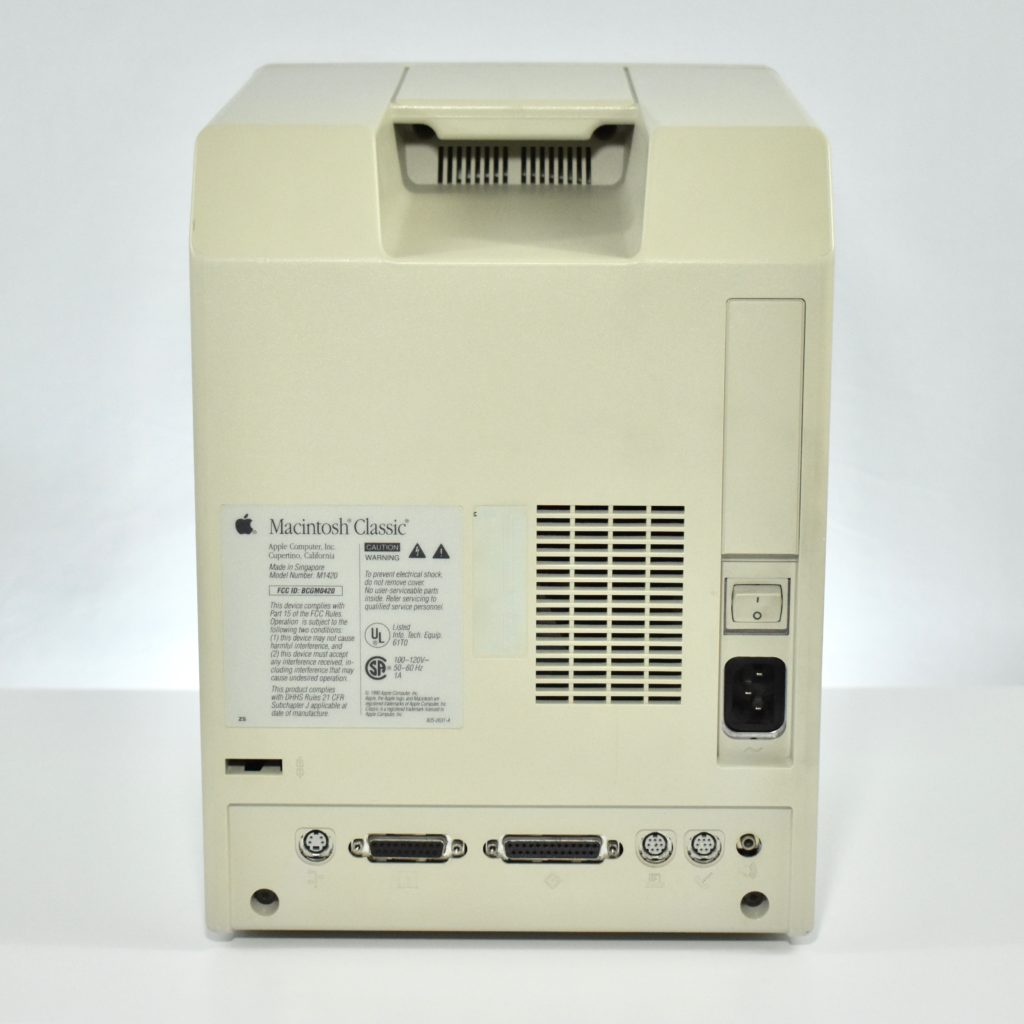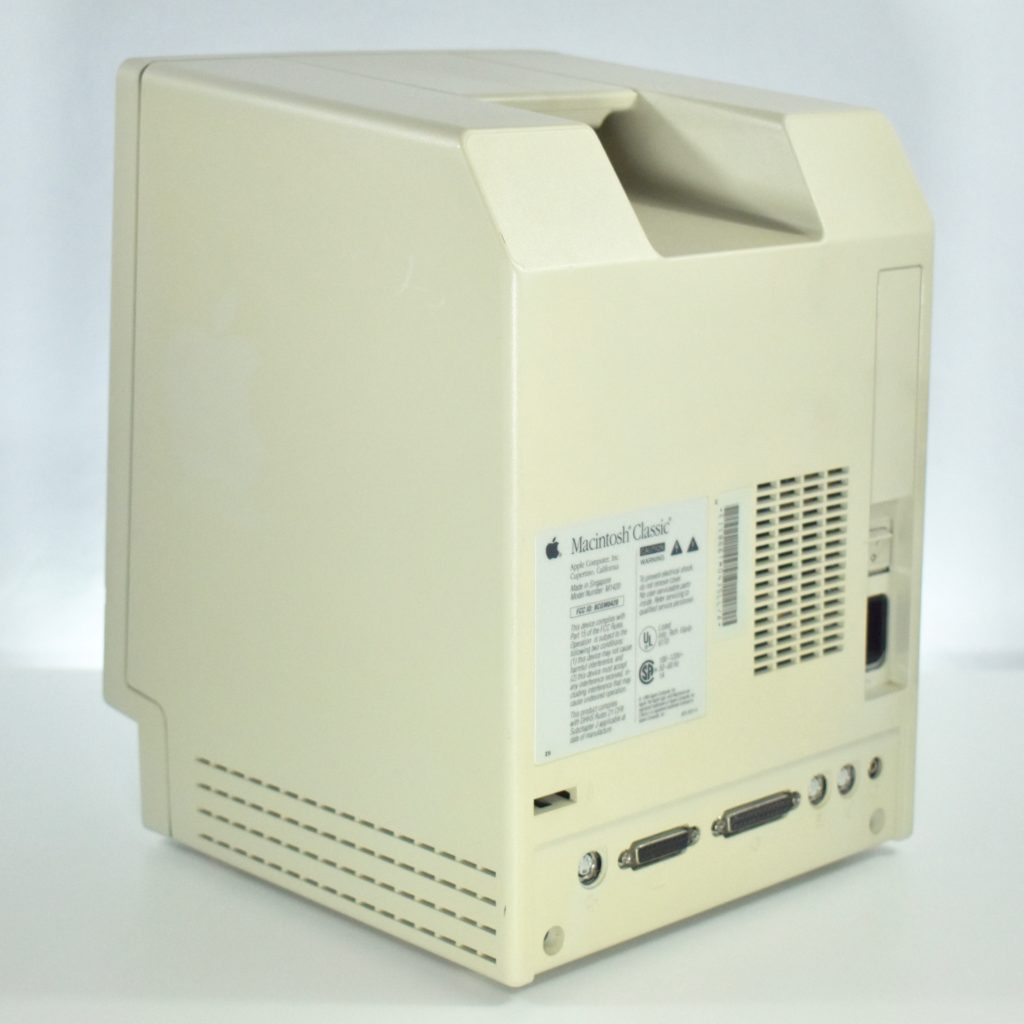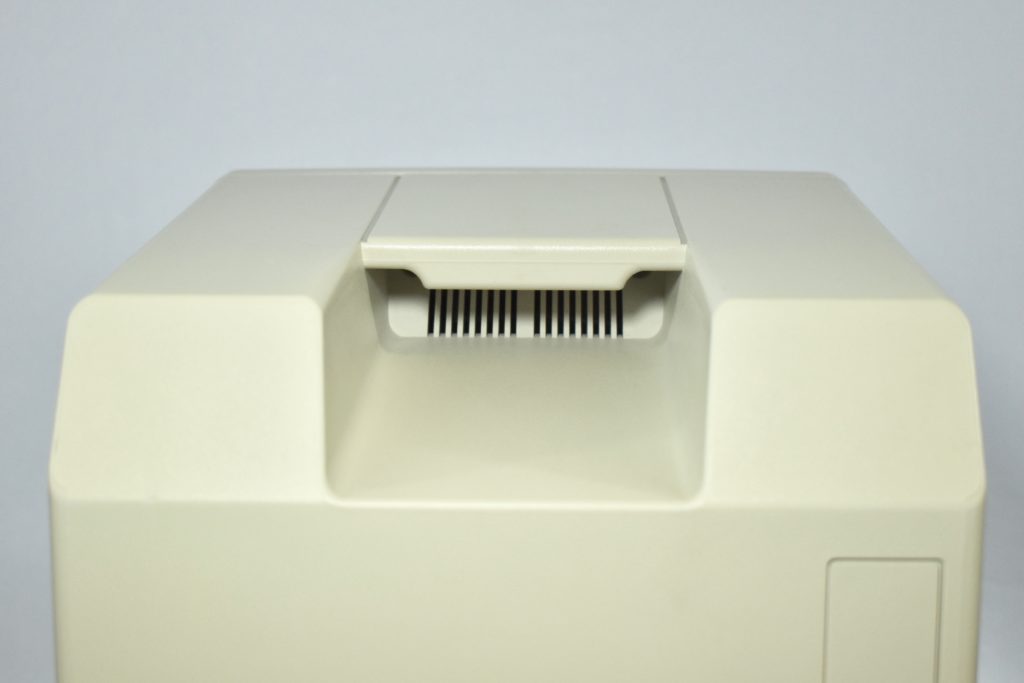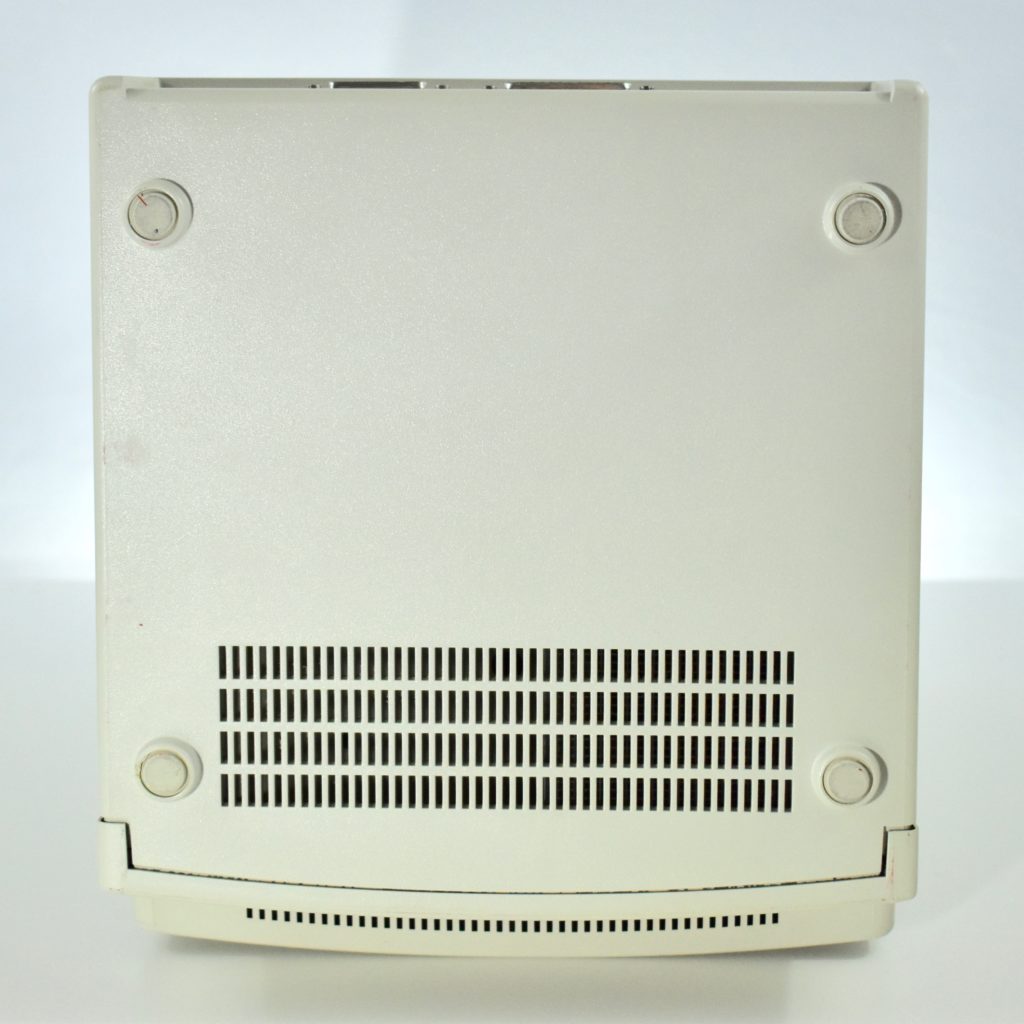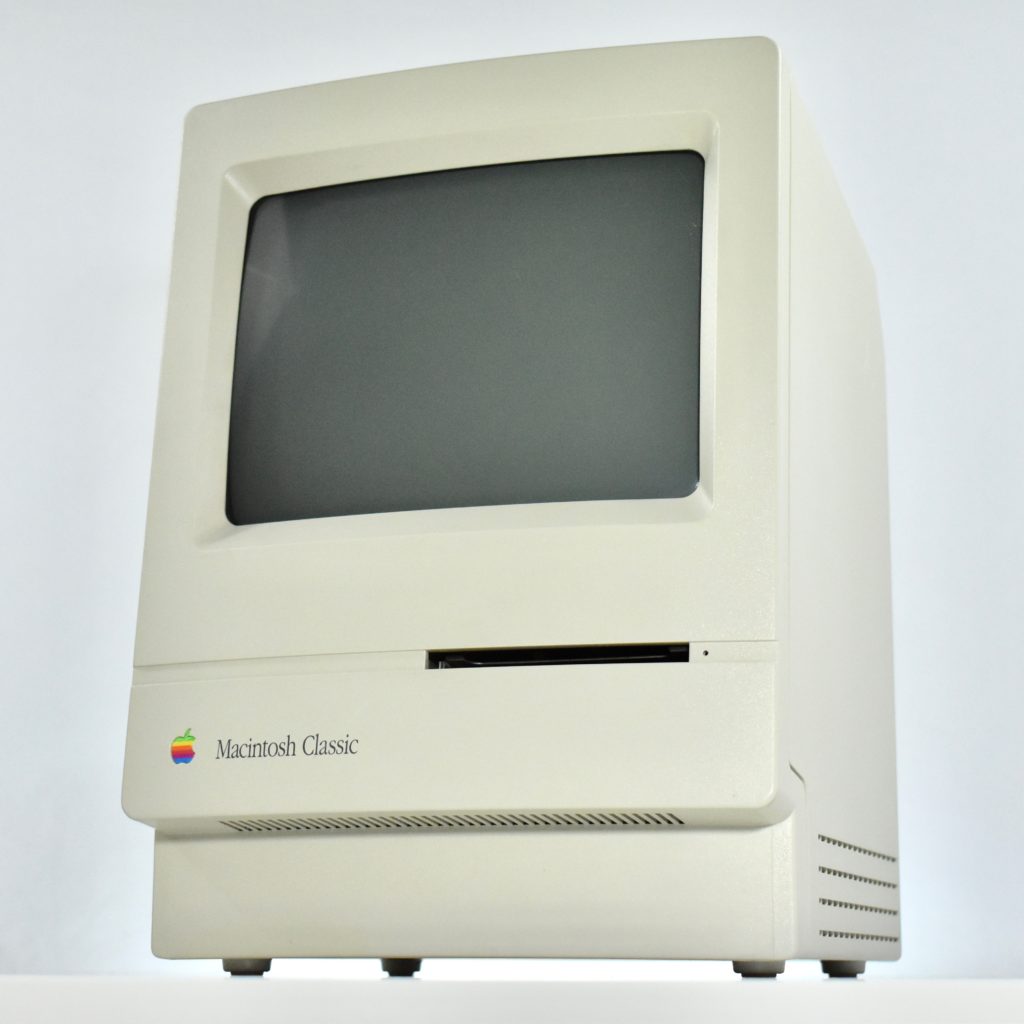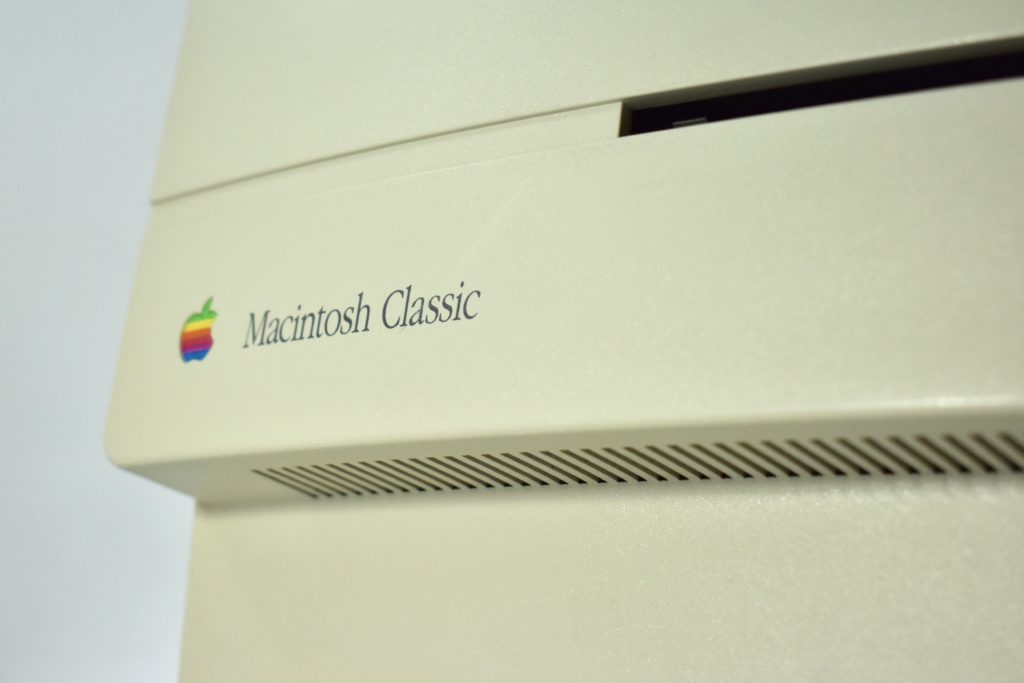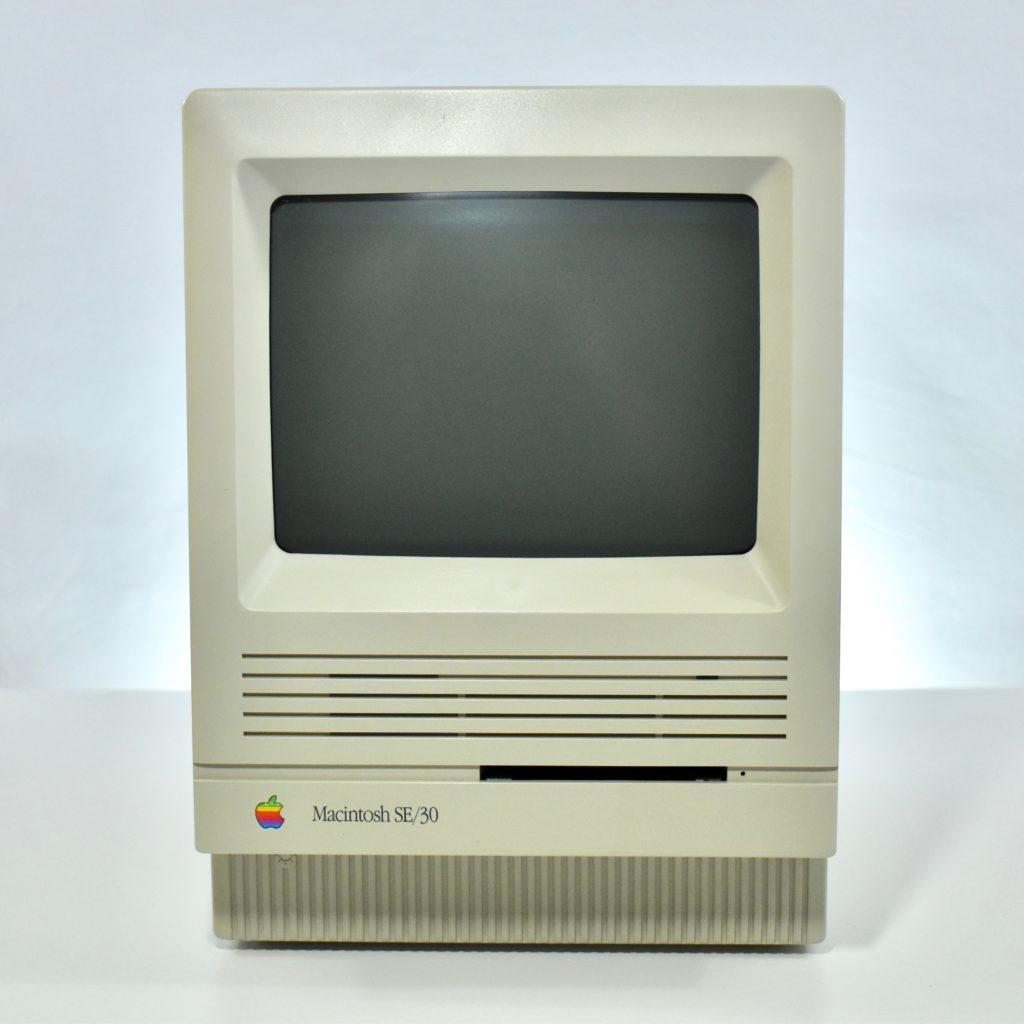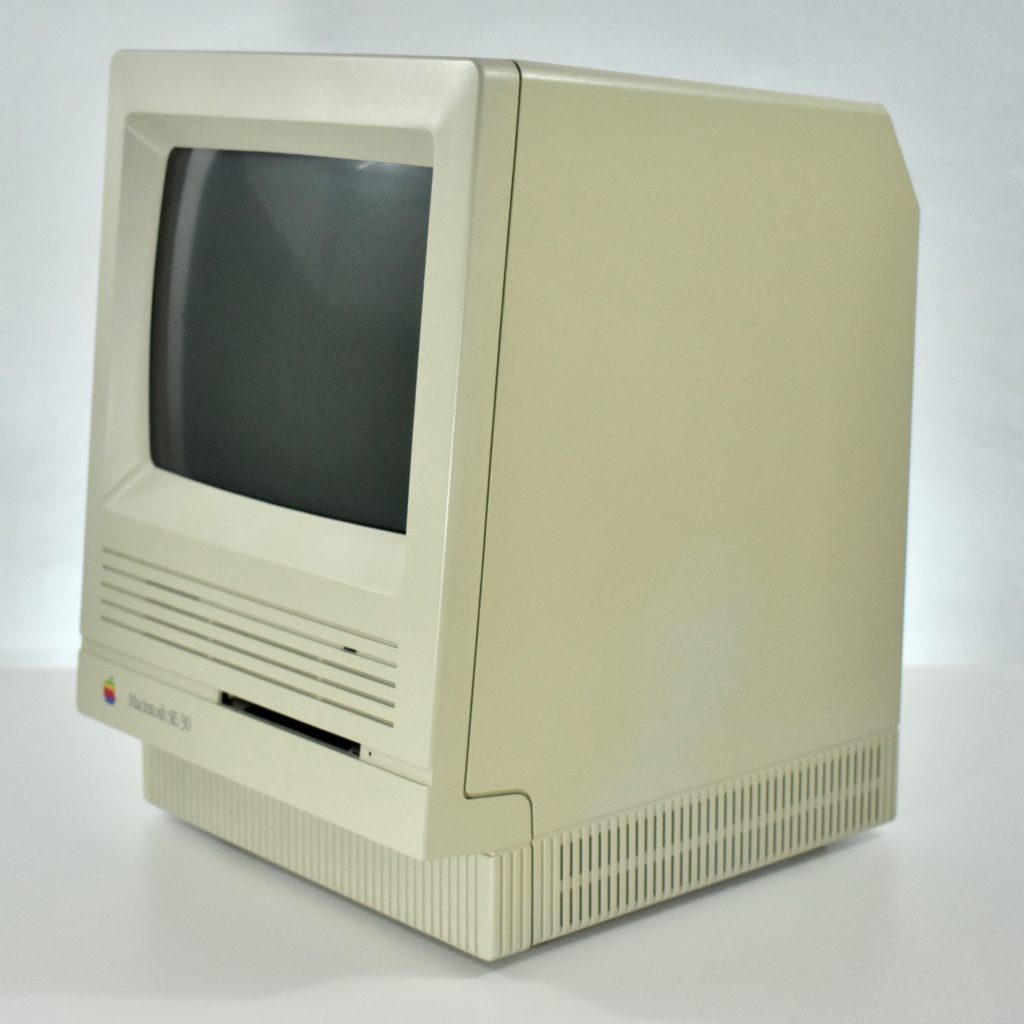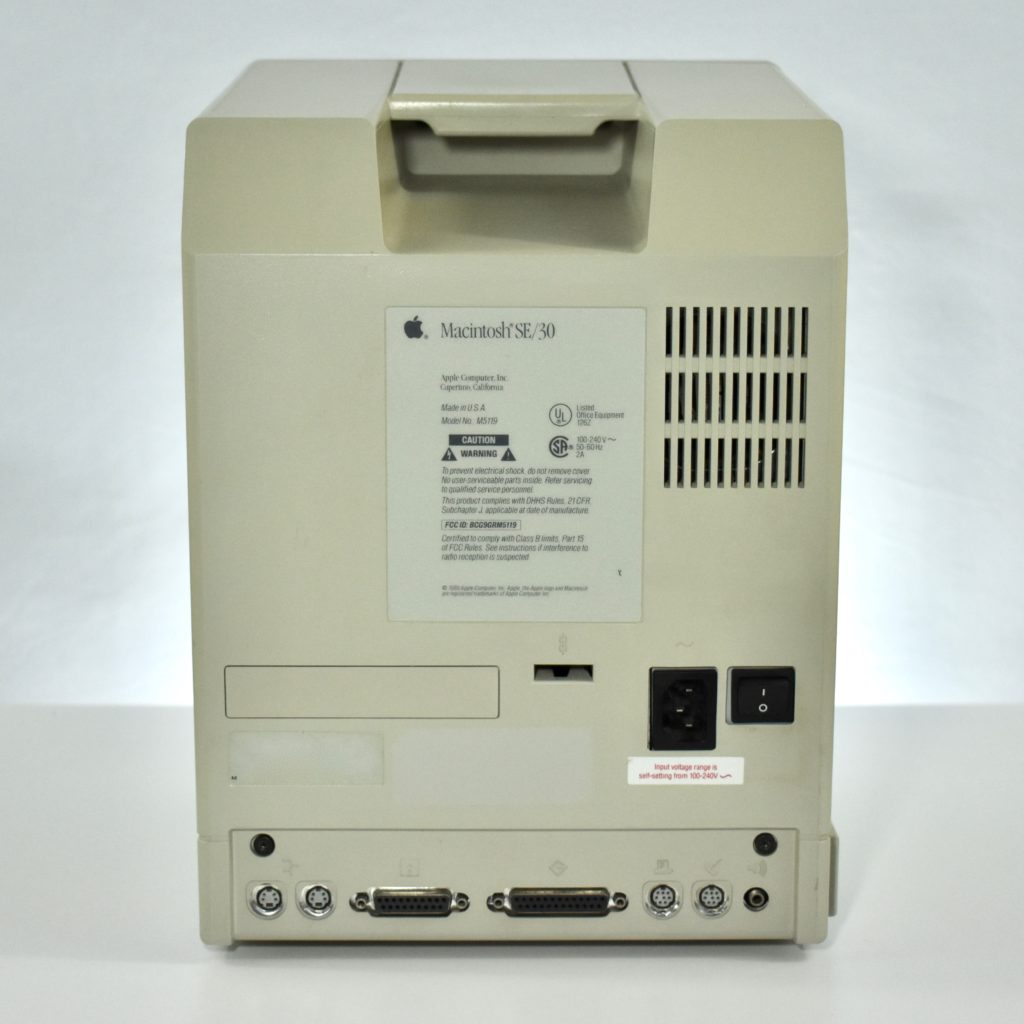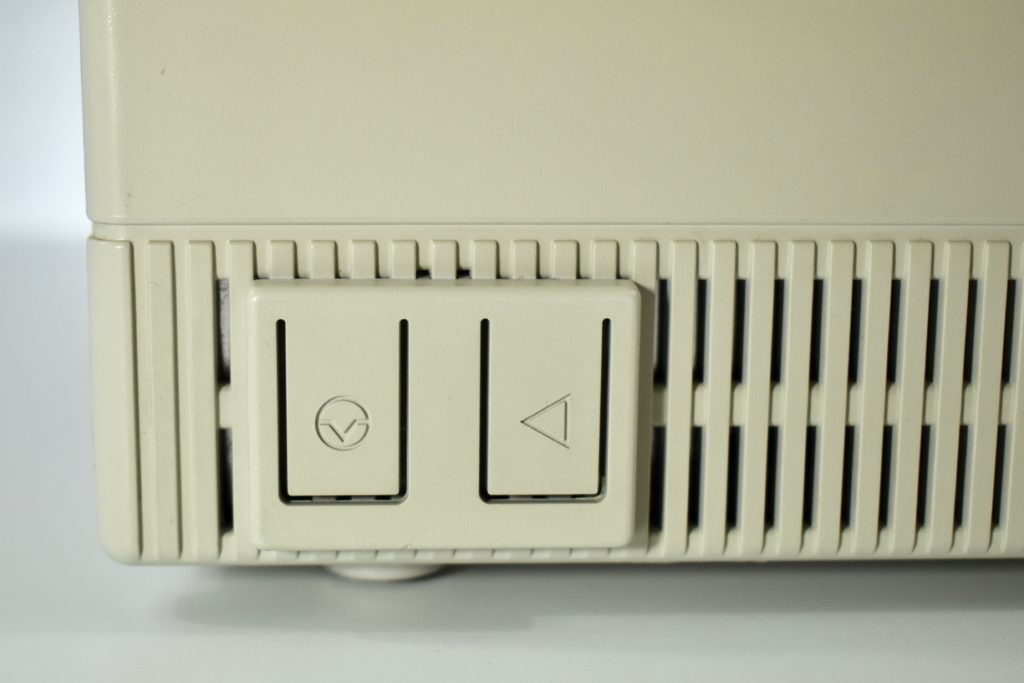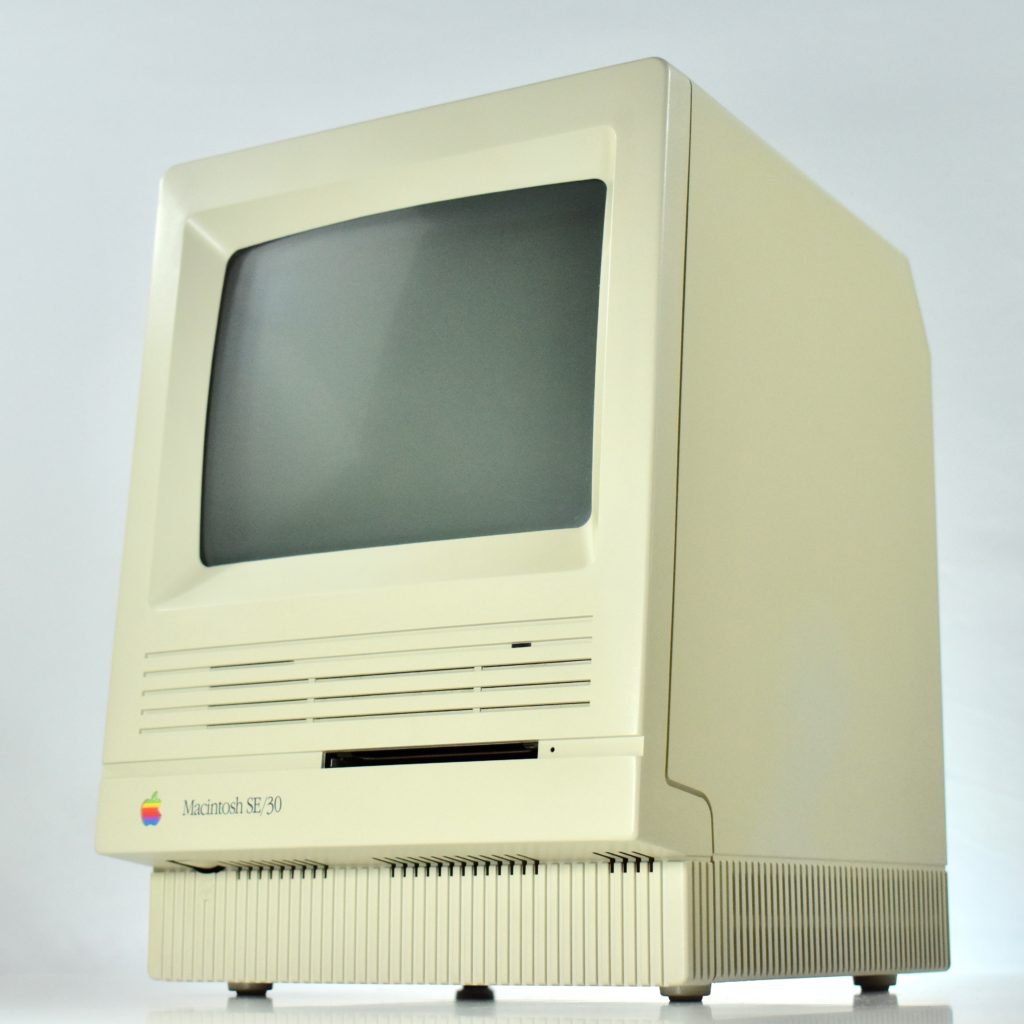The original Macintosh was released in January 1984 as the “Apple Macintosh.” After November 1984 a 512K version was offered and the computers were referred to as the Macintosh 128K and Macintosh 512K. (Internally, the original Macintosh differed from the Macintosh 128K so they are technically two different computers.)
The original Macintosh had a distinctive beige case with a handle and a 9-inch monochrome screen. The selling price when released was $2,495.
The Macintosh was introduced to the American public by the iconic “1984” television commercial directed by Ridley Scott. The commercial aired on CBS during the third quarter of Super Bowl XVIII on January 22, 1984. The voiceover stated: “On January 24th, Apple Computer will introduce Macintosh. And you’ll see why 1984 won’t be like 1984.”
The Macintosh introduced several “firsts” in a relatively inexpensive consumer-level personal computer:
- built-in 3.5-inch floppy disk drive
- consistent user experience and user interface among applications
- an all-in-one design (combining the CPU, monitor, and peripherals into a single unit)
- graphical user interface controlled by the point-and-click features of an included mouse to access pull-down menus and click icons
- WYSIWYG (What You See Is What You Get) printing
Overall, the Macintosh allowed a user to focus on the work they were doing, rather than struggling to make the computer function.
The original iMac included a Motorola 68000 microprocessor running at 7.8336 MHz, 128 KB RAM, a one-bit (black-and-white) 9-inch CRT with a resolution of 512×342, and a single 400 KB single-sided 3.5-inch floppy disk drive (with no internal storage).
The original Macintosh was floppy-disk-based. A “Startup Disk” on a single disk could be temporarily ejected as the computer was used to allow documents to be saved or to allow it to run another application stored on another disk. The computer’s operating system was named System 1.0 and consisted of System 0.97 and Finder 1.0. The highest-level OS that can be run on the original Macintosh was System 3.2 and Finder 5.3. The Macintosh shipped with the applications MacPaint and MacWrite.
The original Macintosh did not include a cooling fan, instead relying on convection cooling. The absence of the fan made the computer run quietly.
Inside the case, the original Macintosh was signed by the entire Macintosh Division at Apple (c. 1982). The signatures are molded on the internal plastic and include: Peggy Alexio, Colette Askeland, Bill Atkinson, Steve Balog, Bob Belleville, Mike Boich, Bill Bull, Matt Carter, Berry Cash, Debi Coleman, George Crow, Donn Denman, Christopher Espinosa, Bill Fernandez, Martin Haeberli, Andy Hertzfeld, Joanna Hoffman, Rod Holt, Bruce Horn, Hap Horn, Brian Howard, Steve Jobs, Larry Kenyon, Patti King, Daniel Kottke, Angeline Lo, Ivan Mach, Jerrold Manock, Mary Ellen McCammon, Vicki Milledge, Mike Murray, Ron Nicholson Jr., Terry Oyama, Benjamin Pang, Jef Raskin, Ed Riddle, Brian Robertson, Dave Roots, Patricia Sharp, Burrell Smith, Bryan Stearns, Lynn Takahashi, Guy “Bud” Tribble, Randy Wigginton, Linda Wilkin, Steve Wozniak, Pamela Wyman, and Laszlo Zidek.
Source: EveryMac.com, and Wikipedia (Macintosh) (1984 commercial)
